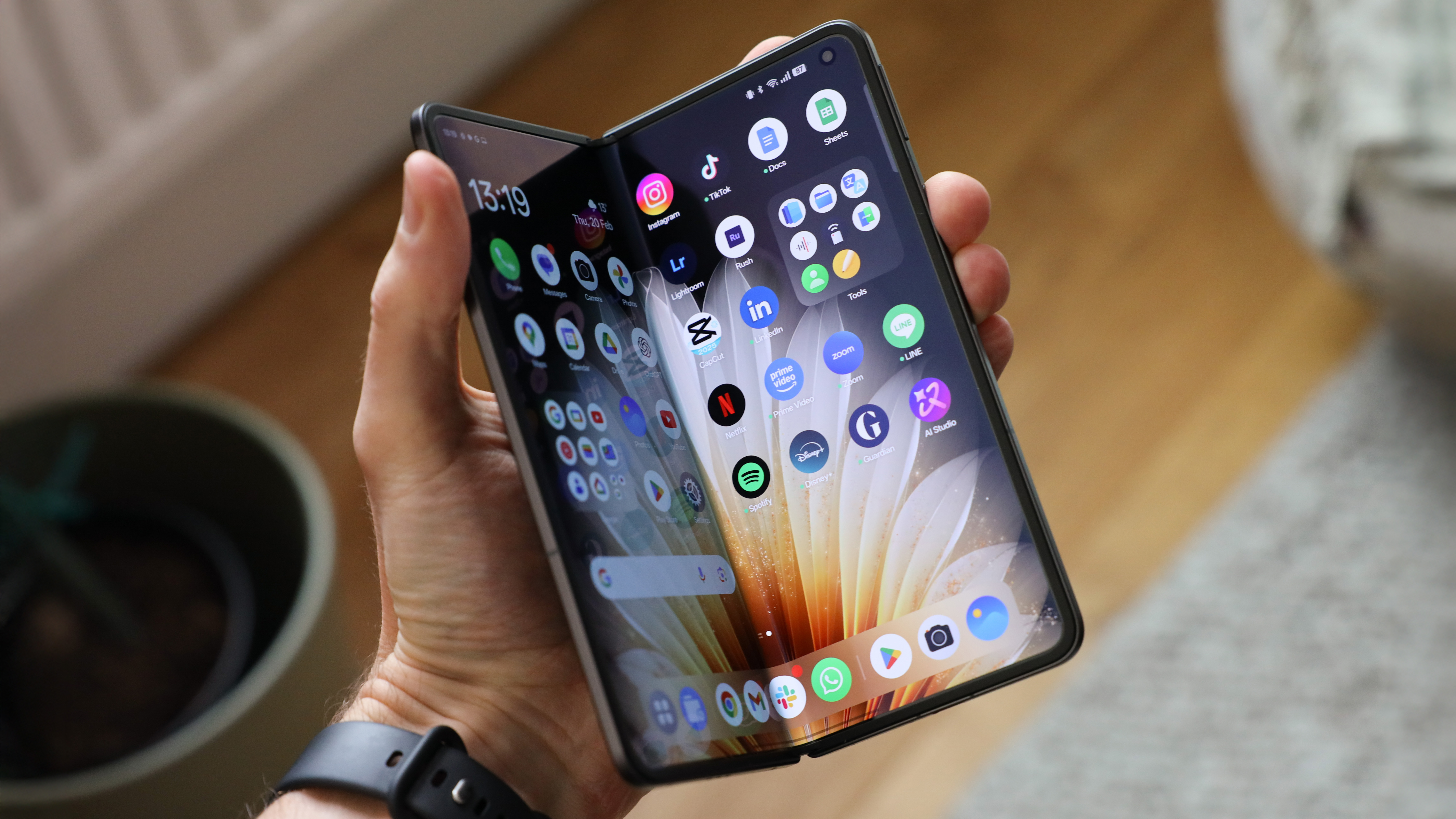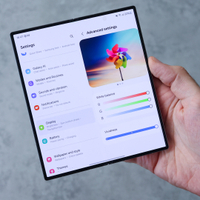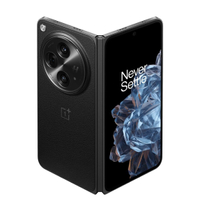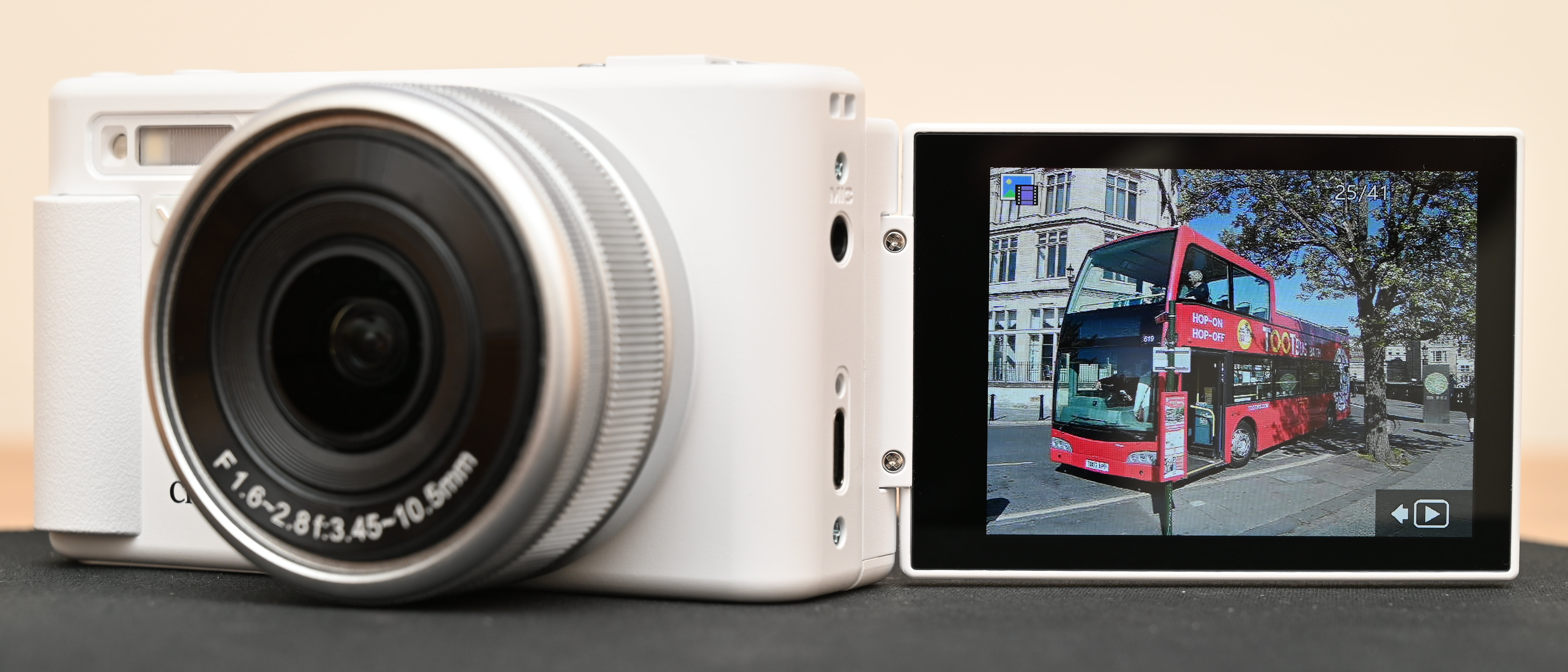Digital Camera World Verdict
The Oppo Find N5 is the new folding phone to beat. Extraordinarily thin and light, with virtually no crease, and still packing a battery that keeps going all day, this is the first time I would actually consider swapping out my traditional phone for a folding one. However, the only thing that would hold me back is the N5’s unfortunate camera hardware downgrade on the trio of cameras from the Find N3 / OnePlus Open. After declaring the OnePlus Open the best camera foldable, the N5 didn’t give me the big photography update I was hoping to make it a dead cert to succeed that title. But that said, the N5’s Hasselblad co-developed cameras still are adequate for such a remarkably thin device.
Pros
- +
Remarkably light and thin enough to rival non-folding phones
- +
Virtually no crease on the inner screen
- +
Large capacity battery keeps the big inner screen going all day
Cons
- -
Underwhelming camera improvements
- -
Inner screen ratio is not ideal for some tasks
- -
Limited number of apps that make good use of the larger screen
Why you can trust Digital Camera World
After some initial buzz around their inception, foldable phones are still waiting for their aha moment to take them into the mainstream – but the latest Oppo might just be the device to do just that.
The Oppo Find N5 addresses one of the biggest complaints around foldables – their bulky size, with it debuting as the world’s thinnest book-style foldable. Yes, “book-style”, as technically Huawei’s tri-folding phone is thinner when unfolded, but Oppo has taken aim at making this the most viable foldable alternative to the bar-style phone yet – although unfortunately not quite without any compromise.
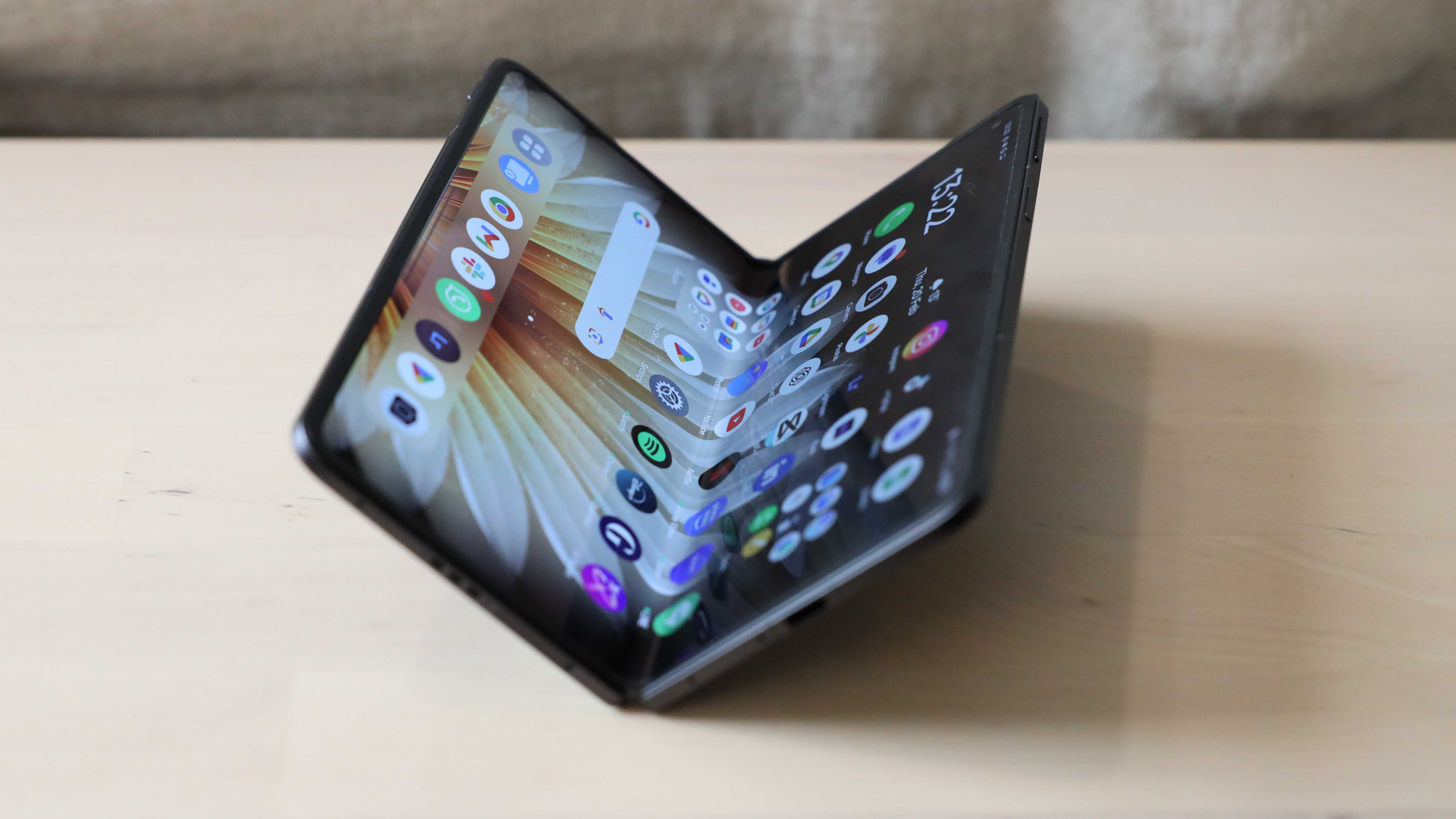
Oppo Find N5: Specifications
Processor | Qualcomm Snapdragon 8 Elite |
RAM | 16GB LPDDR5X |
Storage | 512GB UFS 4.0 |
Wide Camera | 50MP, Sony LYT-700, 1/1.56", 21mm, OIS, f/1.89 |
Ultra Wide Camera | 8MP, 1/4.0", 15mm, 116°, f/2.2, Autofocus |
Telephoto Camera | 50MP, 1/2.75", 70mm, OIS, f/2.7 |
Selfie Cameras | 8MP, 21mm, f/2.4 |
Cover Screen | 6.62in, 20.7:9, 2616×1140, 1600nits (outdoors), 2450nits (peak), |
Inner Screen | 8.12in, 9.9:9, 2248×2480, 1400nits (outdoors), 2100nits (peak) |
OS | ColorOS 15.0.1 based on Android 15 |
Battery & Charging | 5600mAh, 80W SUPERVOOCTM 50W AIRVOOCTM |
Dimensions | Open: 160.87mm × 145.58mm × 4.21mm Closed: 160.87mm x 74.42mm × 8.93mm Weight: 229g |
Oppo Find N5: Price
Buying Oppo phones in North America is not so straightforward, and Oppo has previously deferred to its better-known OnePlus sister brand to release a rebranded device stateside – with Oppo’s Find N3 becoming the OnePlus Open last time around. But OnePlus has confirmed that it doesn’t plan to release this, or any foldable, in 2025, which leaves US buyers most likely having to import the Find N5.
The Oppo Find N5 will cost SGD$2,499 (~$1,899 / £1,799) at launch, and will only come in a 16GB+512GB option. This undercuts the equivalent Samsung Galaxy Z Fold 6 configuration by some margin, with Samsung’s 512GB model costing $2,019, although it has seen some aggressive discounts and trade-in offers. Samsung also offers a 256GB version of the Fold 6 at a closer price of $1,899.
The OnePlus Open, despite being an older device, is still very much on sale and costs $1,699 / £1,599, but it is currently (at the time of writing) discounted by around $/£400.
Oppo Find N5: Design & Handling
I had high expectations before I got the device, I read the many leaks, rumors, and teasers about how thin the Find N5 was going to be – but still holding the N5 for the first time was special. This phone is seriously thin – both folded and unfolded. Oppo says it had to redesign the USB-C port to even fit it in the device, with just a whisker of metal separating it from touching the sides. Yet the N5 still manages to include a dual SIM slot, power and volume buttons, and an alert slider – albeit all slimmer versions than you get on other phones, but nothing has been sacrificed.
The Find N5 also has wireless charging and somehow Oppo managed to slip in a huge capacity 5600mAh battery – while making the battery physically smaller than the 4800mAh battery in the Find N3. The battery uses silicon-carbon battery tech to achieve a higher capacity in a smaller size, while also maintaining efficiency and heat. At the launch N5 launch event, I got a chance to see the battery outside of the phone and it was absolutely remarkable, and really made me question why my mirrorless camera batteries are still so huge.
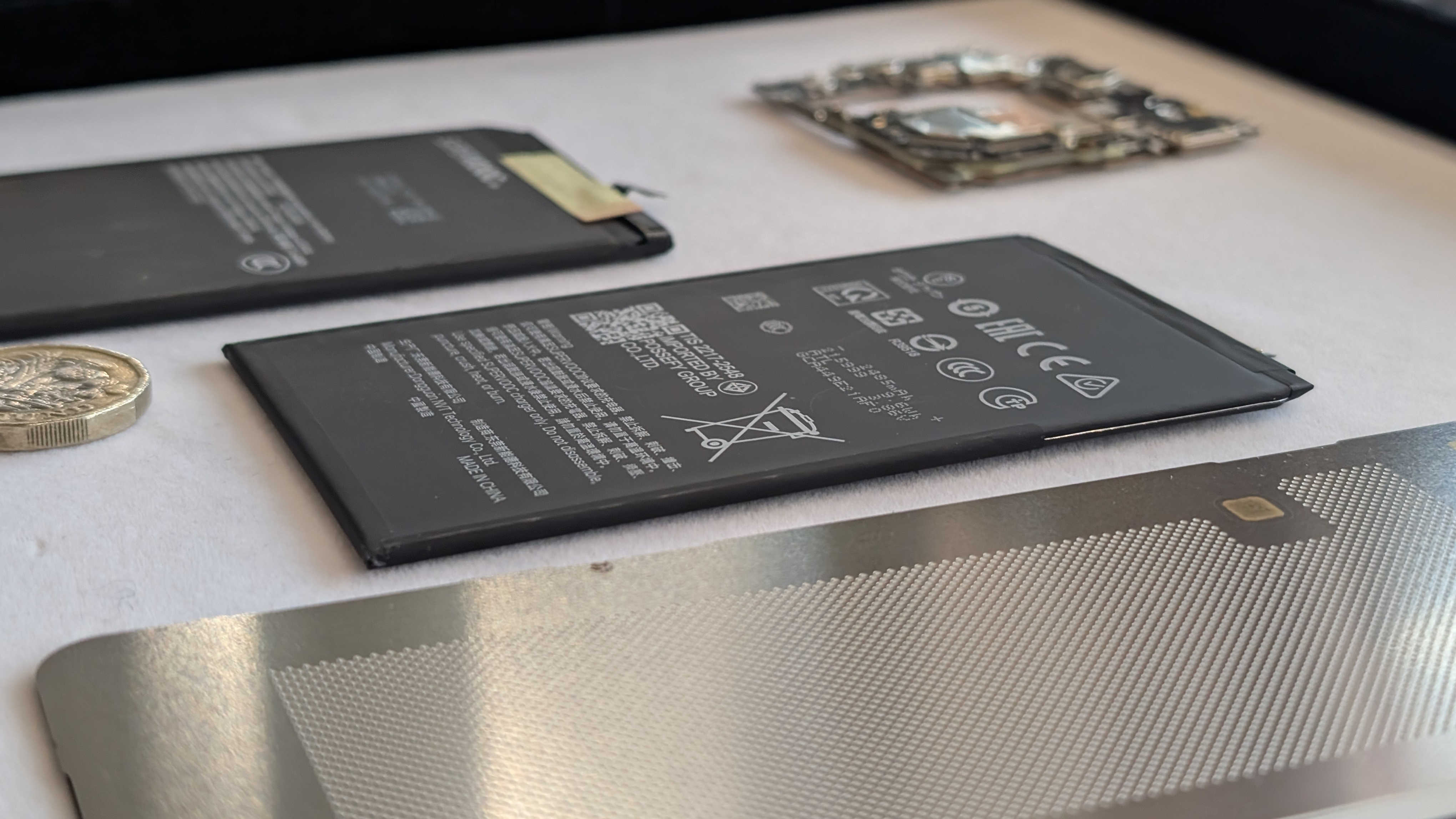
Oppo does include a vegan-leather microfiber snap-on case in the box, although the included case doesn’t add magnets, so if you want to use MagSafe-compatible chargers and accessories, you’ll need to buy another case. The included case has some protection for the hinge, and does look very nice, but on-brand with the N5, it is very thin, and I am not sure how much protection it will provide.
Although Oppo claims the Titanium Flexion Hinge is the strongest yet, with aerospace-grade aluminum it should have 36% more rigidity than previous generations, and the aluminum shell should be 30% stronger overall. The screens are also tougher, with the Nanocrystal Glass on the front screen offering a claimed 20% better protection and the inner screen 70% better shock resistance. The phone also has a triple IPX6, IPX8, and IPX9 water resistance rating, so you can be confident getting caught in the rain, or under high-powered water jets, if you’re so inclined.
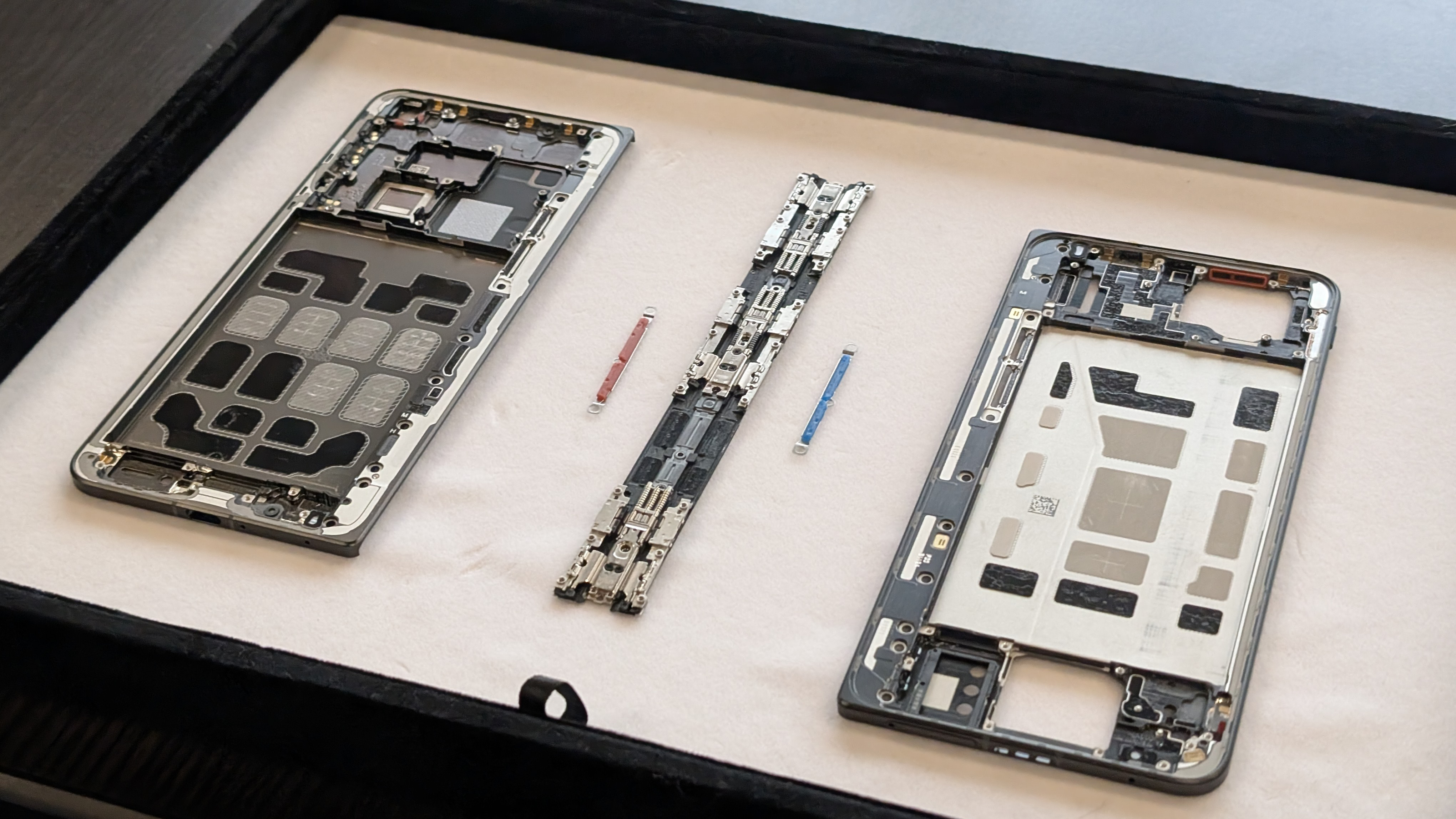
Folded, the N5 is a mere 8.93mm thick, which beats the Galaxy Z Fold 6 by some margin, the latter clocking in at 12.1mm. While this is still thicker than almost any traditional flagship launched in the last year, with the N5 in one hand and my Google Pixel 9 Pro in the other, the difference in thickness is nearly imperceptible in feel. Where previously the increased bulk of folding phones has held me back from wanting one as my daily driver, the N5 is the first folding device I have used where that is just not an obstacle. Why wouldn’t I want practically the same size phone as a Pixel 9 Pro or S25 Ultra, but with the benefit of the additional inner screen?
And speaking of the inner screen, Oppo has worked miracles with ‘the crease’. Or should I say, what crease? Oppo has redesigned the hinge of the N5, and ninety-nine percent of the time, I didn’t even notice the crease when using the phone. The only times it did become apparent was under overhead spotlights, when content was very dark, or when viewed at odd angles you wouldn’t actually use your phone at. You can also see the crease when the phone is off, but seriously, stop staring at your blank phone screen. I have had the phone for a little over a week, and likely my fold count is only in the lower triple digits, but so far, the crease doesn’t appear to be getting any more pronounced.
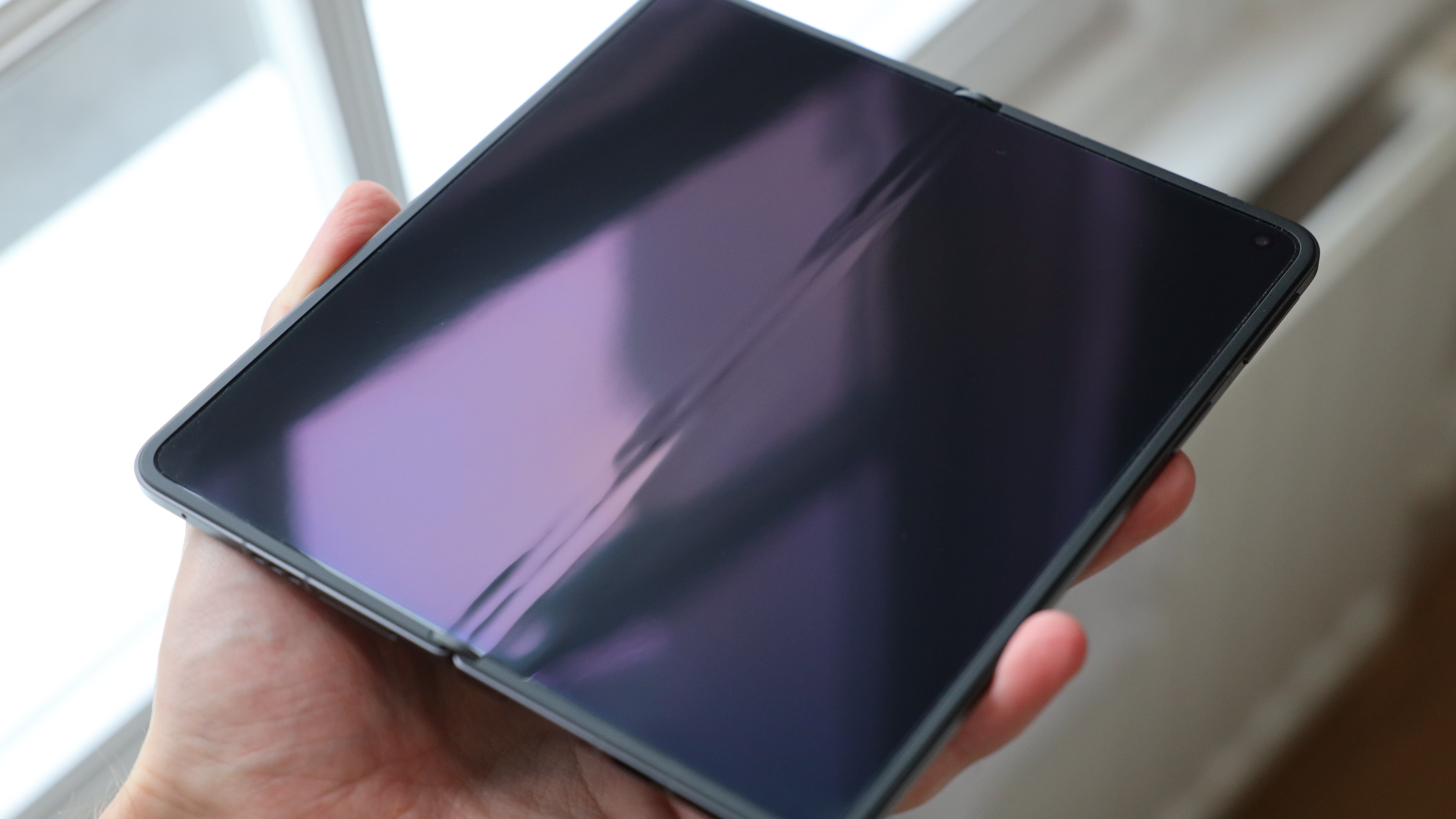
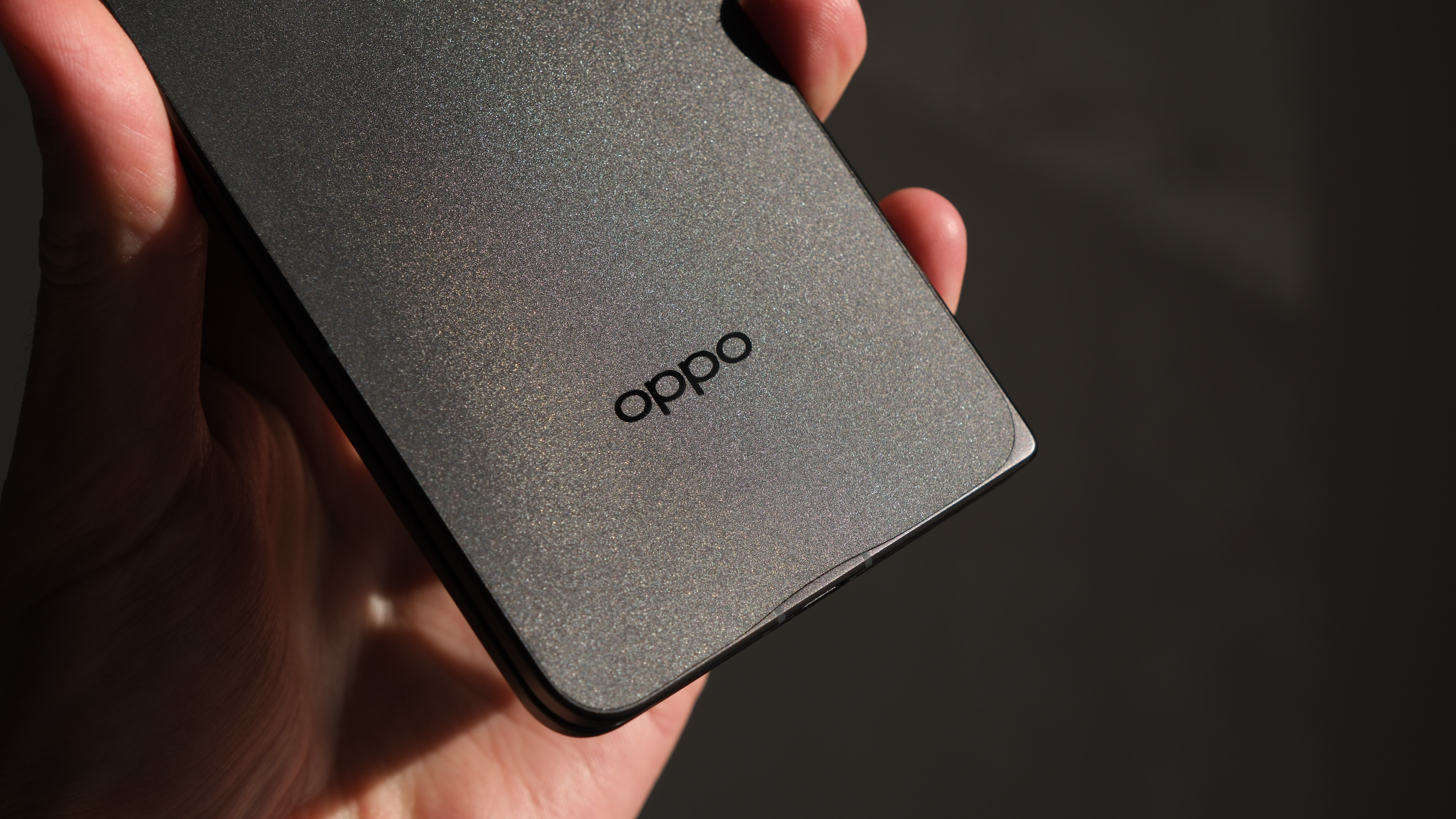
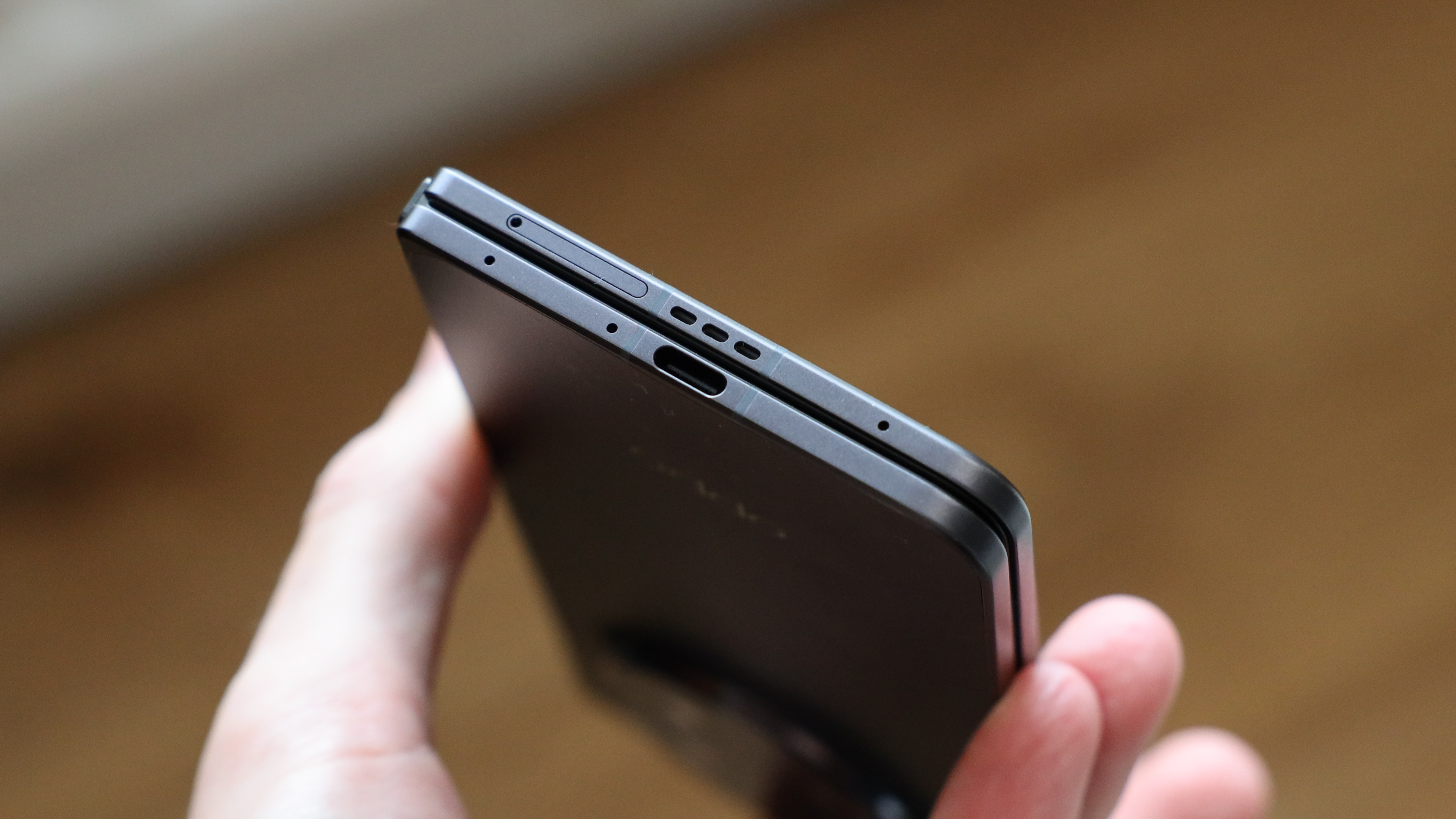
Both the front screen and inner screen are very nice, and although neither is the top screen you’re going to get on a device this year, day to day I don’t think you’d really care. The front screen measures 6.62in, 2616x1140 pixels, 431PPI, and with a 20.7:9 aspect ratio, and also features a center-positioned camera cutout. The screen has probably as narrow bezels as the design will allow, but the flat screen meeting squared-off sides does make the bezels look a little more prominent than the slightly tapered edges on other devices like the OnePlus 13. Content displayed on the screen is sharp, and colors are well balanced – I prefer the screen in Natural mode, but there is a Vibrant mode if you want a bit more punch to your saturation.
The inner screen measures 8.2in, 2248x2480, 412 PPI, and has a 10:9 aspect ratio, and due to the hinge, the camera is up in the right-hand corner – and there is a screen protector that must be left on. The continuity between the look and feel of content on both screens is perfect. Editing an image on the front screen and then flipping it open for a bigger canvas, colors are reliably the same between the screens.
The inner screen is essentially two of the front screens next to each other, which makes multitasking two apps side by side a breeze as it's a simple case of tapping and snapping one to each side of the screen, you can also do a two-thirds split if you want a bit more space on one app, or dock a third app off to the side to jump back to. This is the perfect setup for anyone who can't help but split their attention, be it watching TikTok while also shopping online or doing some work while keeping one eye on the football scores.
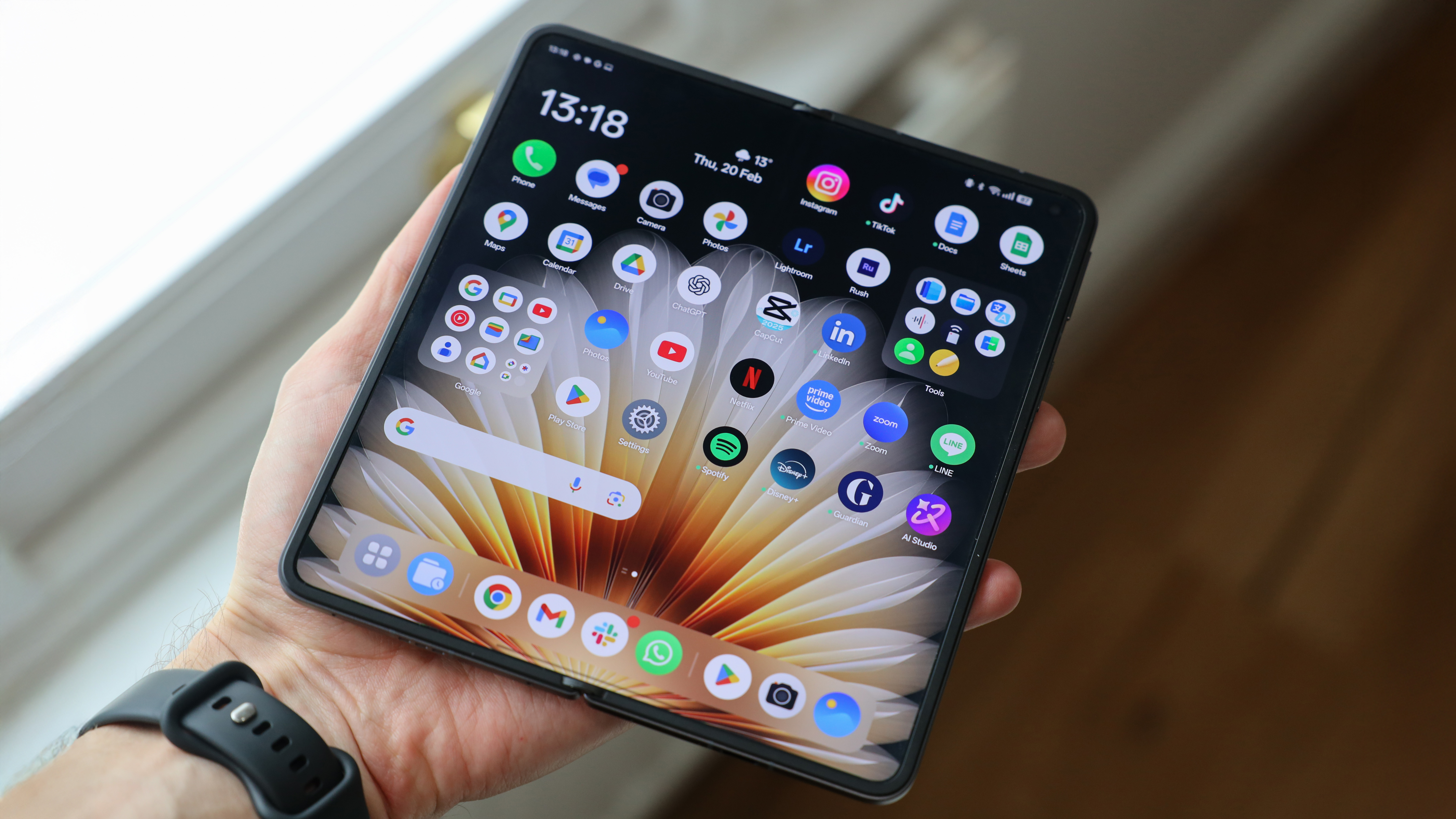
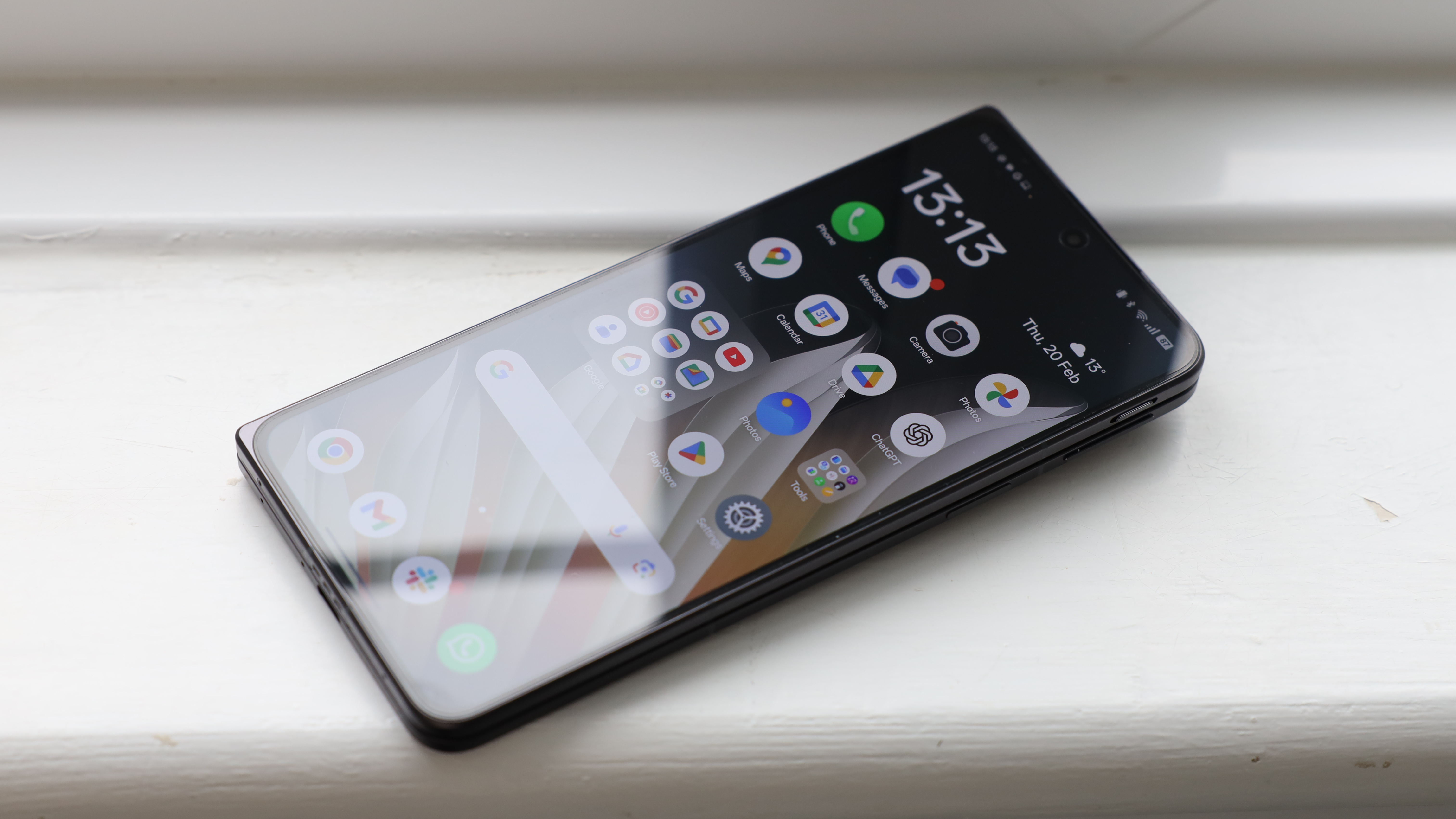
However, using the inner screen in full-screen mode makes me question if this is really the right aspect ratio for a mini-tablet screen, rather than the 3:2 ratio of an iPad Mini. I see potential, but too many apps on the N5 don’t gain a lot from their increased real estate.
Video is commonly in 16:9 or 9:16, which on a 10:9 screen, adds in big black bars that actually don’t make any difference to viewing it on the front screen, or in fact, most phone screens. Apps like Gmail or Slack just space content across the screen rather than using the room more wisely to add side menus or better functionality. And for photo editing, the screen isn’t quite big enough, and Lightroom displays the edit controls over parts of your photo – and actually made me prefer editing on the front screen or in a window where this didn't happen.
I can’t blame Oppo for any of this, and it is down to Android developers not considering their apps on this ratio enough, but with folding phones still such a niche product, I can’t see the situation improving dramatically anytime soon.
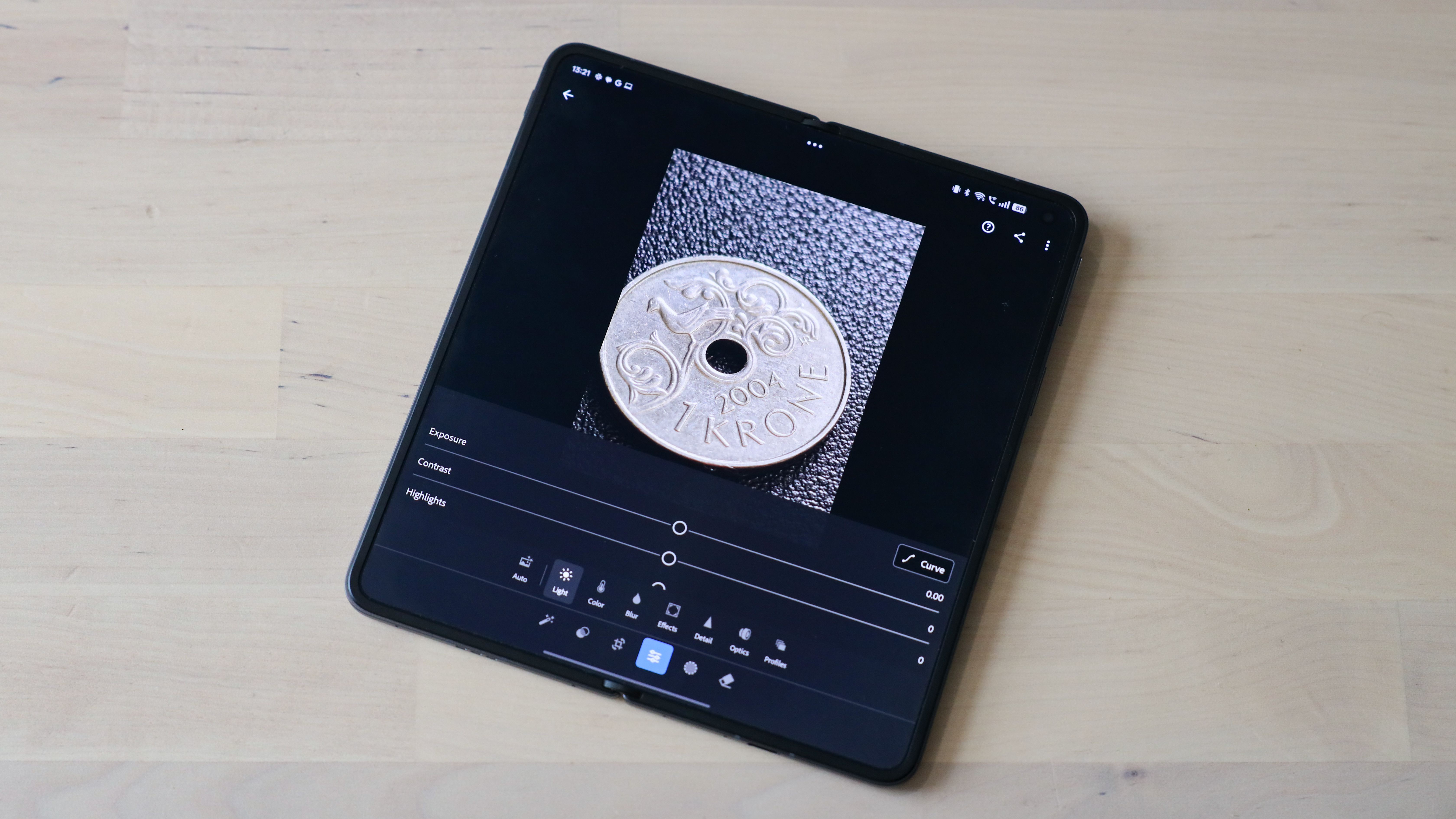
Oppo Find N5: Camera Specs
If you were wondering where Oppo had made sacrifices to make this the thinnest foldable yet – you’ve found them. Unfortunately, all three cameras on the Find N5 have taken a hit with lower spec hardware than the previous Find N3 / OnePlus Open, and while they are far from bad cameras, when the two-year-old OnePlus Open is Digital Camera World’s best foldable for photography – this is not the leap forward in foldable photography I was hoping for.
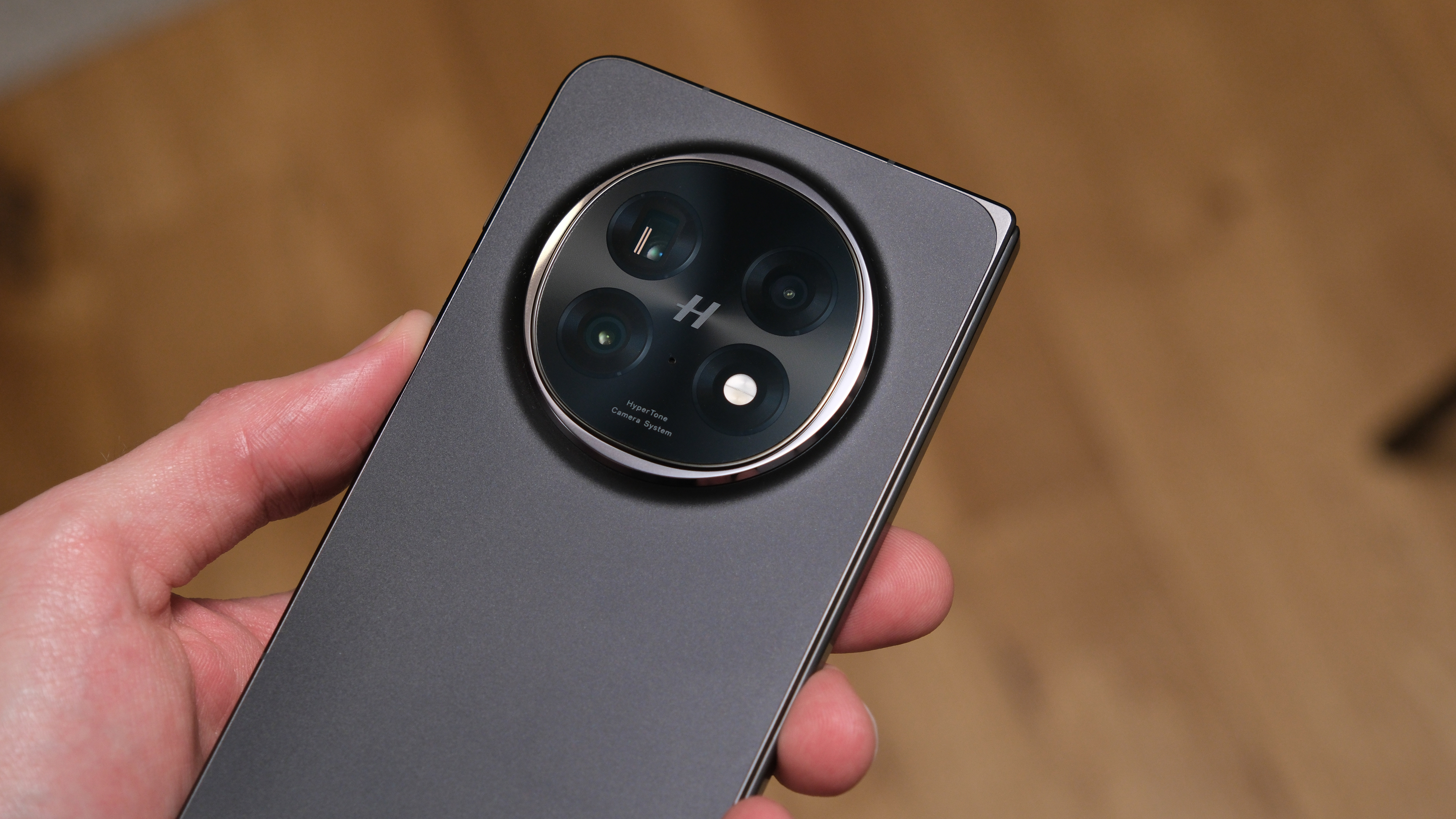
The main wide camera has managed to gain two megapixels with a new 50MP Sony sensor, although the sensor is smaller in size than the previous one (1/1.43” in the Find N3 vs 1/1.56” in the N5) which also means the individual pixels are smaller affecting how much light the pixels are able to capture. The sensor is also paired with a narrower maximum aperture (f/1.89 in the N5 vs f/1.7 in the N3) which again, will hit its light-gathering ability.
It is a similar story on the telephoto sensor, which has gone from a 1/2.0” sensor in the Find N3 to a 1/2.75” sensor in the Find N5, as well as a slightly narrower aperture of f/2.7 (vs f/2.6 previously). The sensor has also been swapped from an Omnivision sensor to one from Samsung, while also reducing the total megapixels from 64MP to 50MP. Some might be more reassured by seeing the more known and trusted Samsung name here, although we had no issues with the Omnivision sensor Oppo used last time out. The good news though is the telephoto camera is now a tele-macro camera, which is a far better perspective for macro photography than the ultra-wide camera used on other phones.
Lastly, for the rear cameras, there is an ultra-wide, which has made the biggest sacrifice of all the sensors, going from a 48MP sensor in the N3 to just an 8MP one in the Find N5 – and the sensor size has halved from a 1/2.0” sensor in the N3 to a rather small 1/4.0” sensor in the Find N5.
There are also two selfie cameras with 8MP sensors, one on the cover screen and one on the inner screen. Although, you might be using these cameras more for video calling than selfies as it's a much better experience and quality to take selfies by flipping open the device and using the main camera and the cover screen to compose.
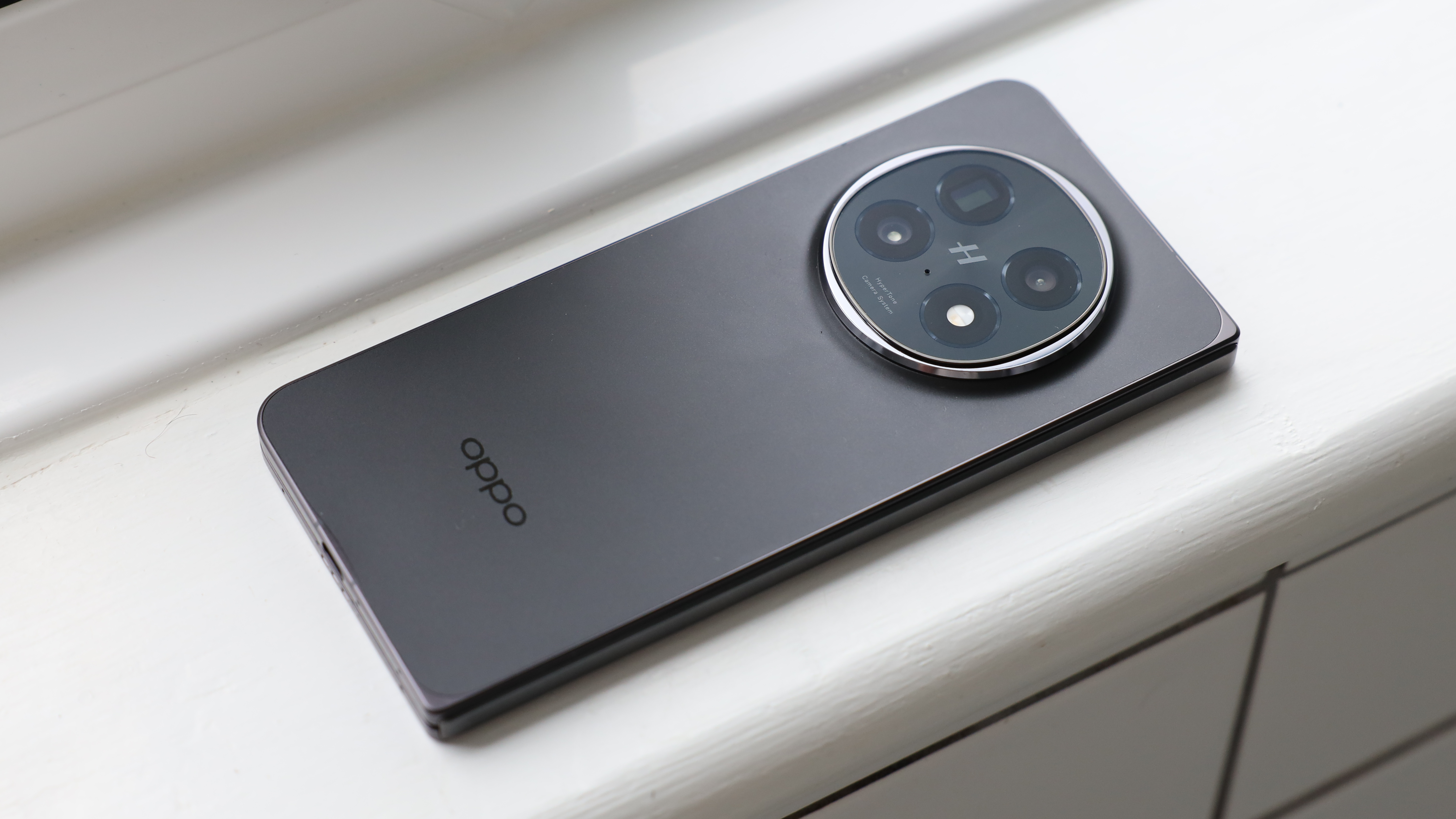
Oppo Find N5: Camera Performance
So the sensors might be weaker than they were previously, but has that had a big hit on the camera performance on the Find N5? Well, the answer is both yes and no, depending on which camera you're using and where.
As a whole unit, all three cameras were very consistent, and flipping between each of the sensors and lenses, there were no obvious differences between photos that might stop me from using them as one continuous set. The N5 cameras are, like most Oppo flagships, developed in collaboration with the Swedish camera legends Hasselblad – renowned for its color science. And the colors in regular photo mode are really very nice, with a good balance between natural tones and saturation to just keep photos vibrant and exciting without overdoing it.
The two 8MP selfie cameras are passable, but I am not sure how much they will get used for selfies. One of my favorite features of the N5 (well, any foldable), is being able to use the main cameras to take selfies or record vlogs and use the cover screen to frame yourself. You can also use both screens at the same time, so you can hand your phone to someone to take a group shot or portrait using the inner screen and make sure they are lining up the framing you want on the cover screen.

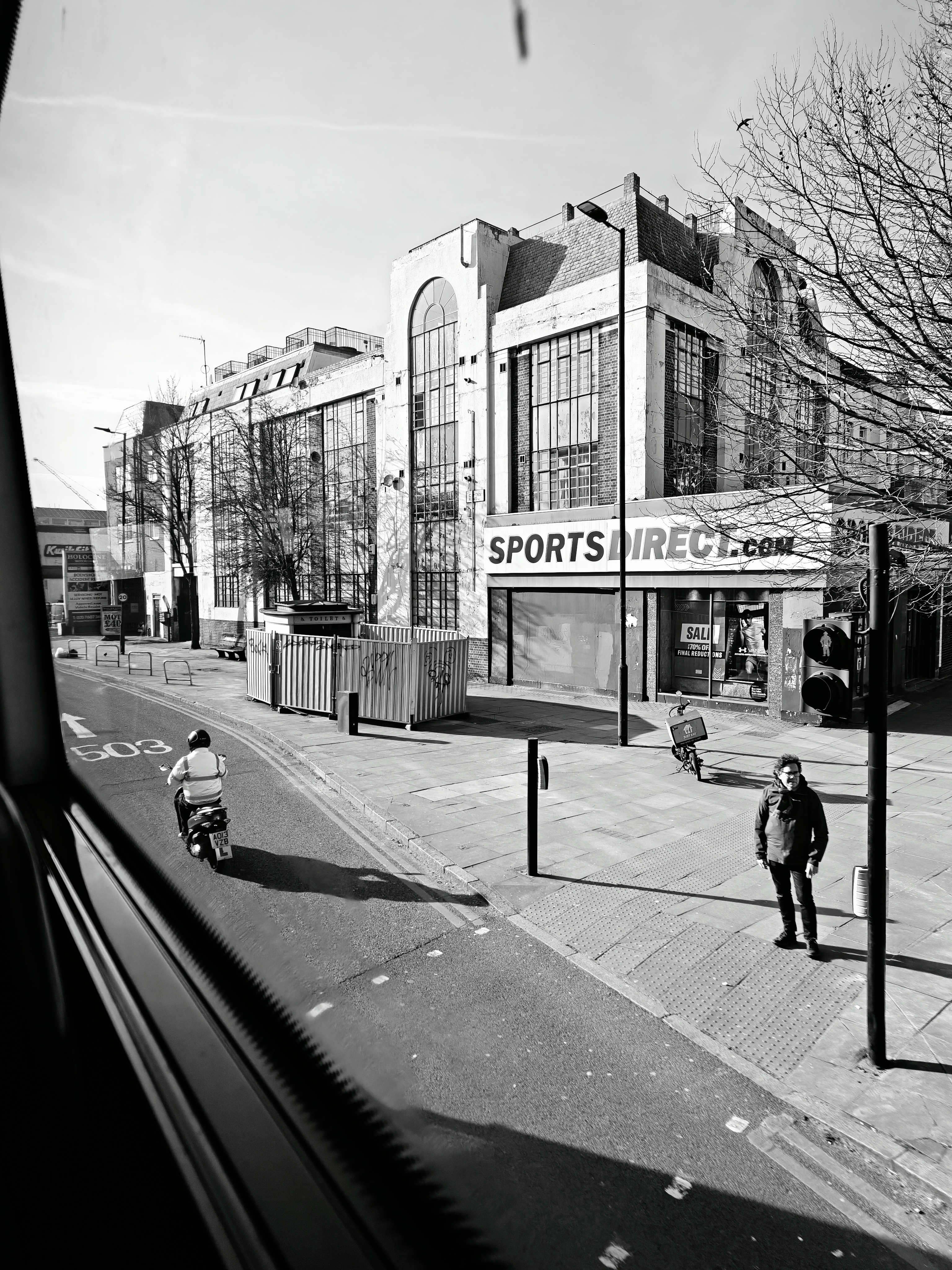

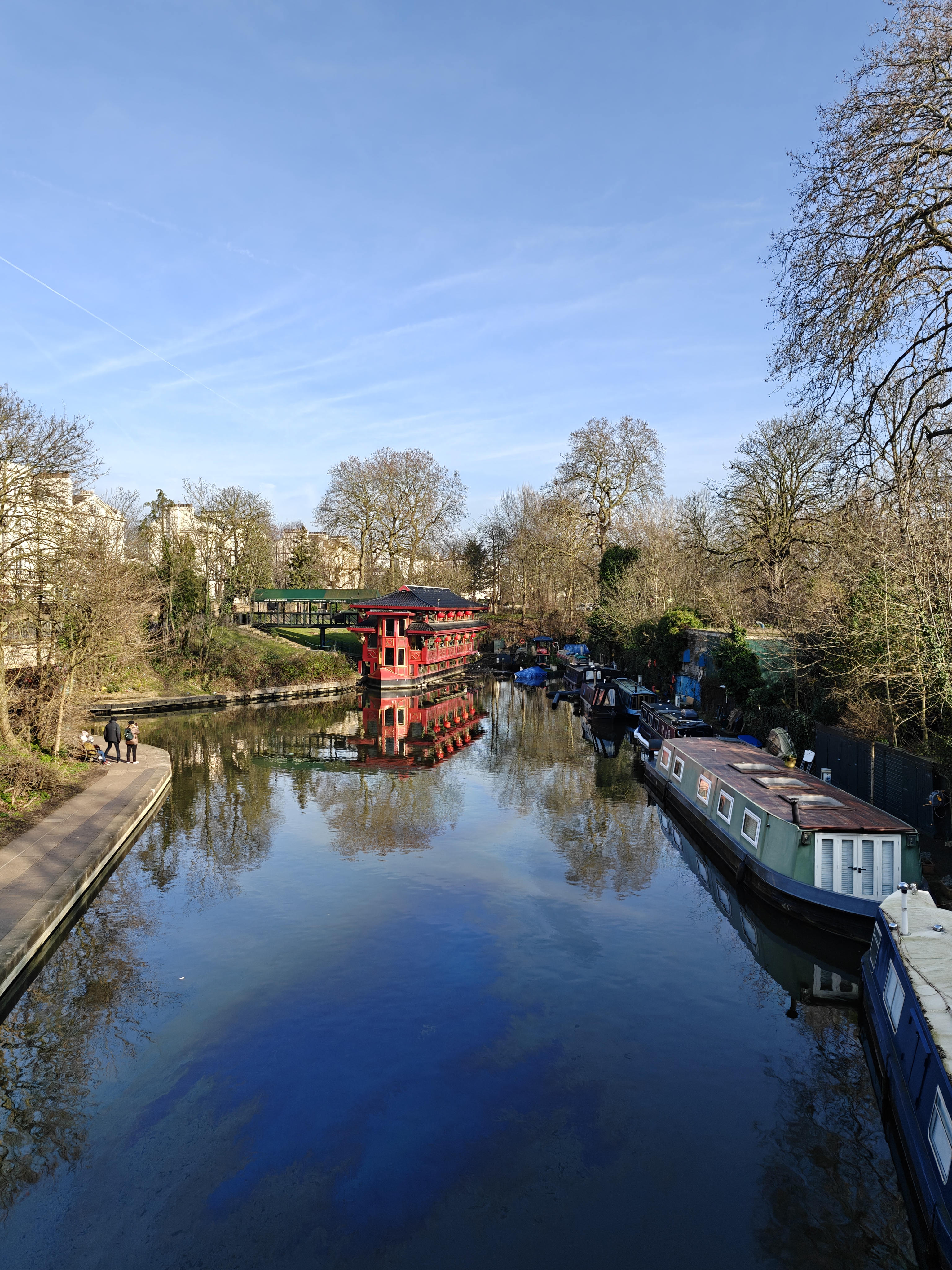
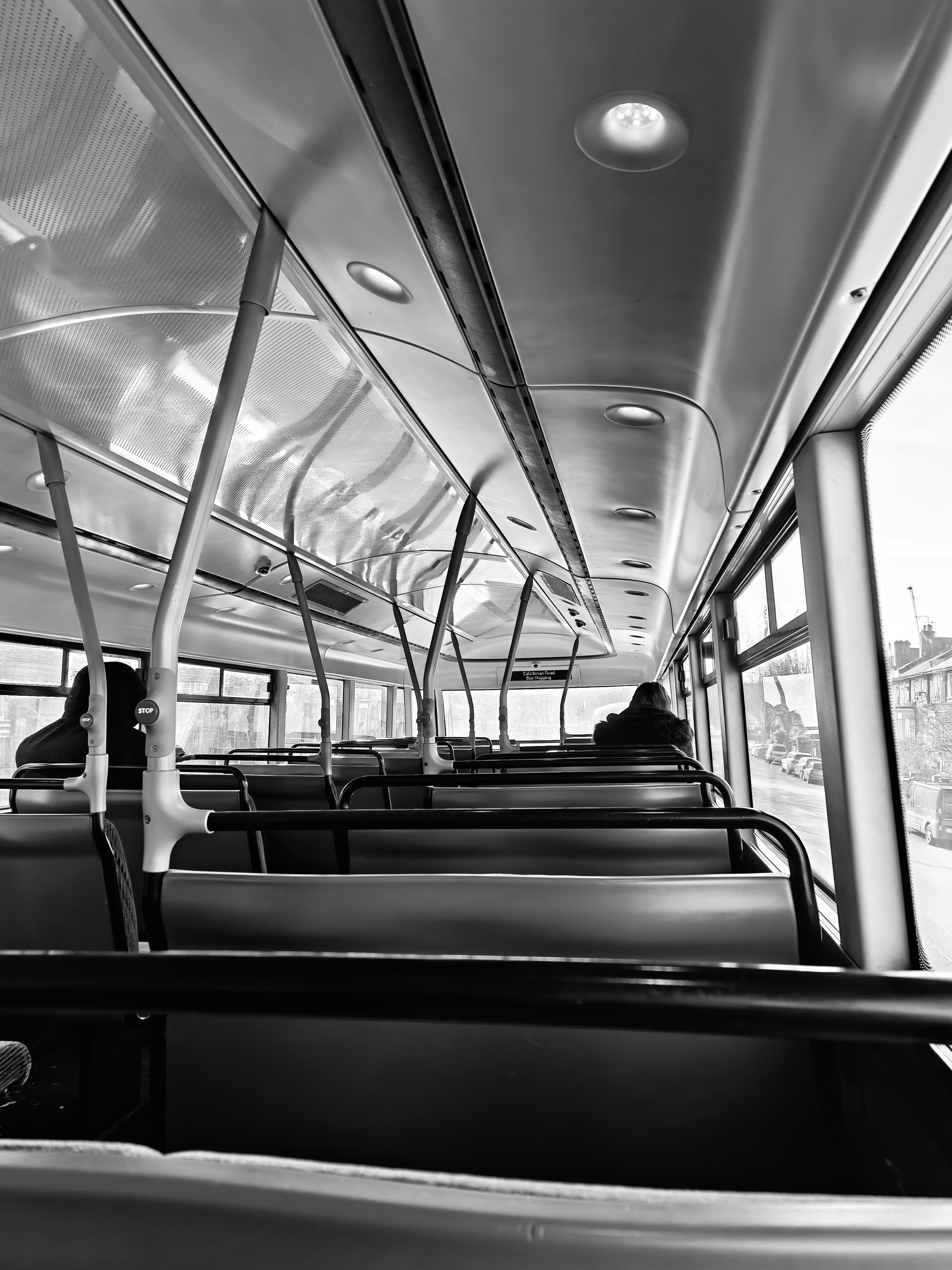






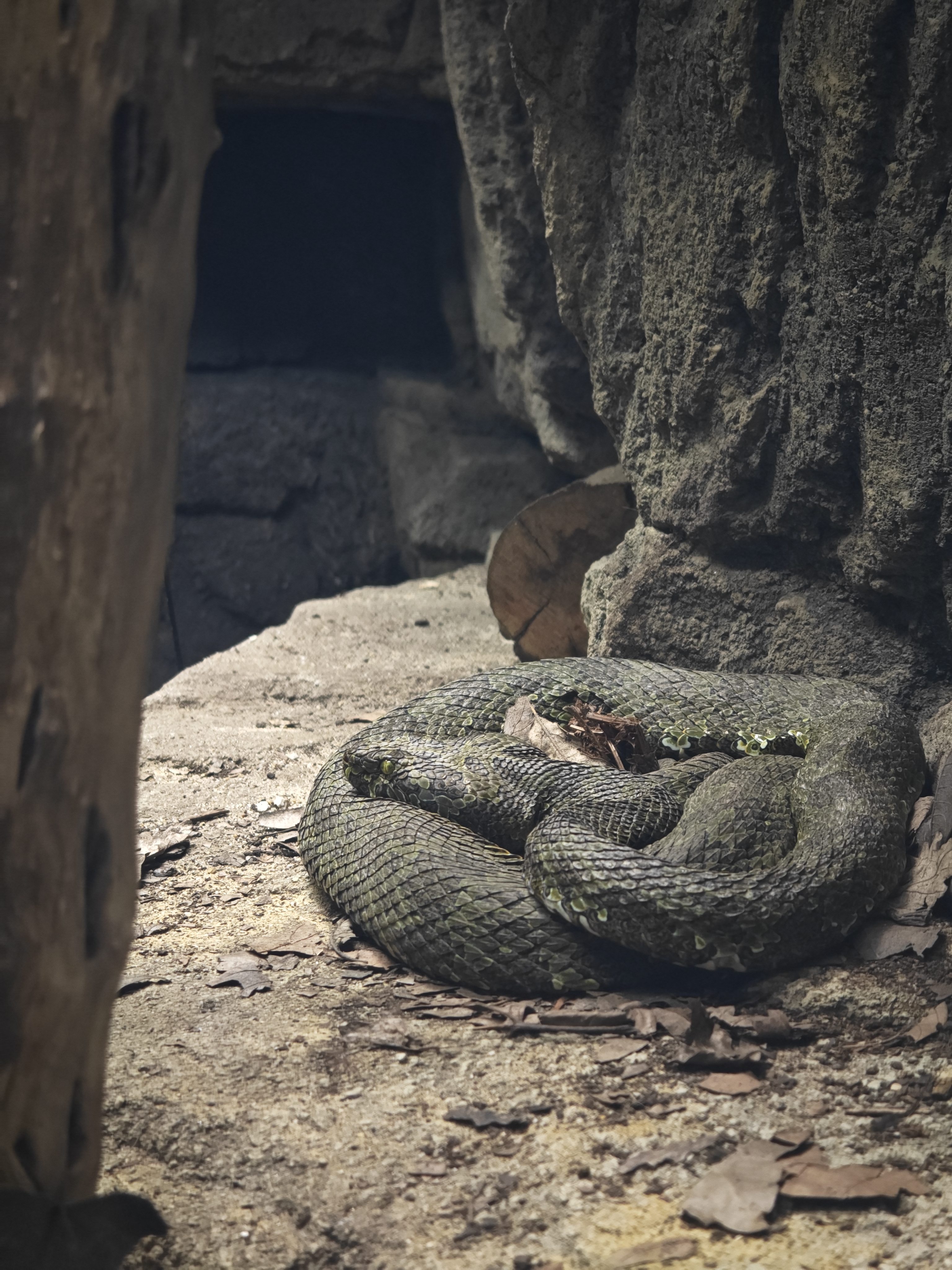
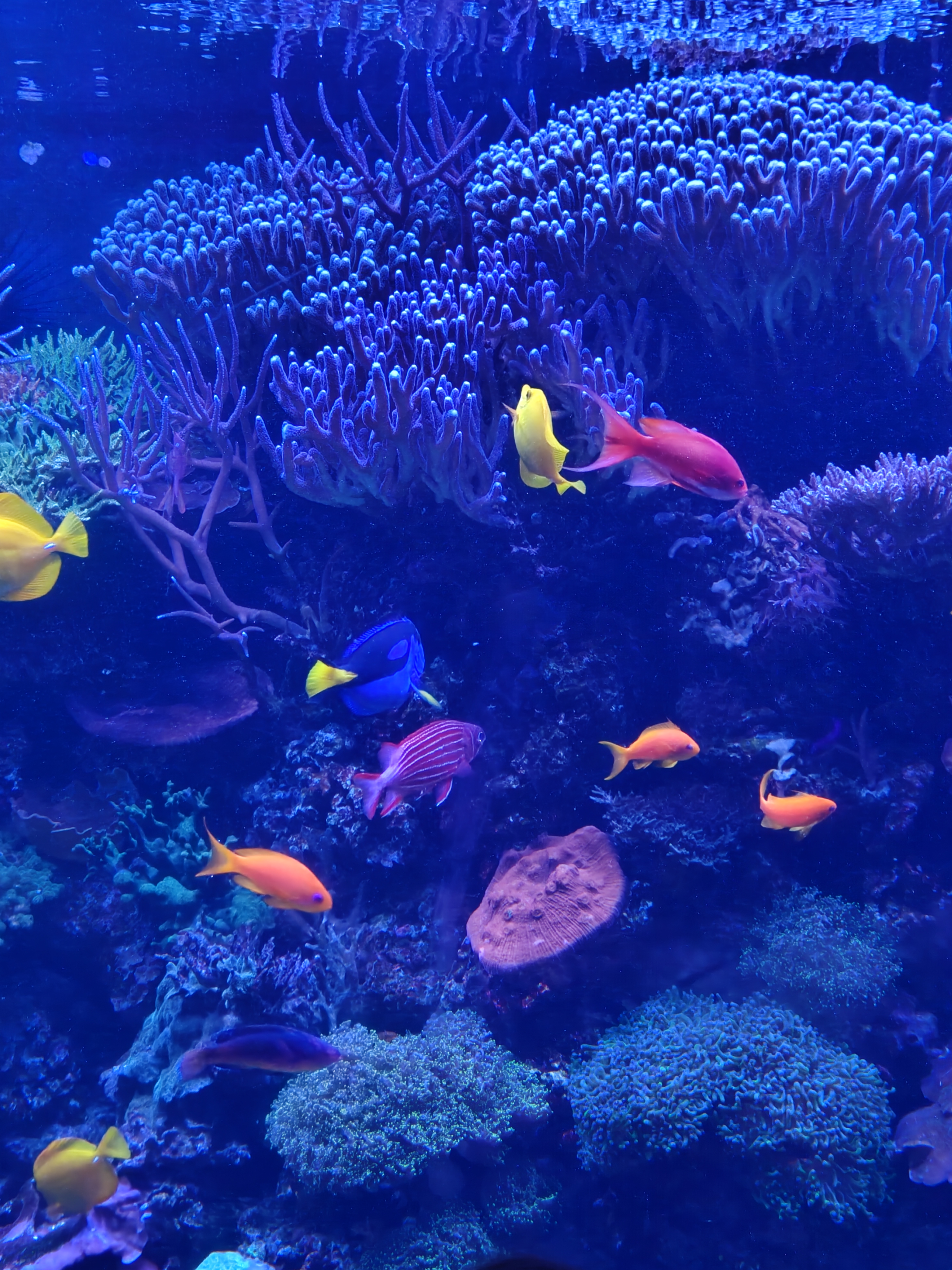

Onto the cameras themselves. The main camera is a solid performer, and I have no major complaints in good light, the sensor captures a good amount of detail with sharp images, although if you pixel peep I do find Oppo's sharpening and noise reduction a little on the aggressive side. The main sensor does offer enough detail to use the 2x crop zoom (equivalent to 46mm) and still get good images. The camera is backed up by optical image stabilization (OIS) but I do question its effectiveness, as more camera shake managed to creep into my images than I would call ideal.
When the light starts to dip, out of the three cameras, with the largest sensor and widest aperture, this is the one to use, although it is far from the best low-light phone out there, it is decent, but it seemed to struggle to freeze action as well as other devices, and fast-moving subjects did become blurred and lose detail.
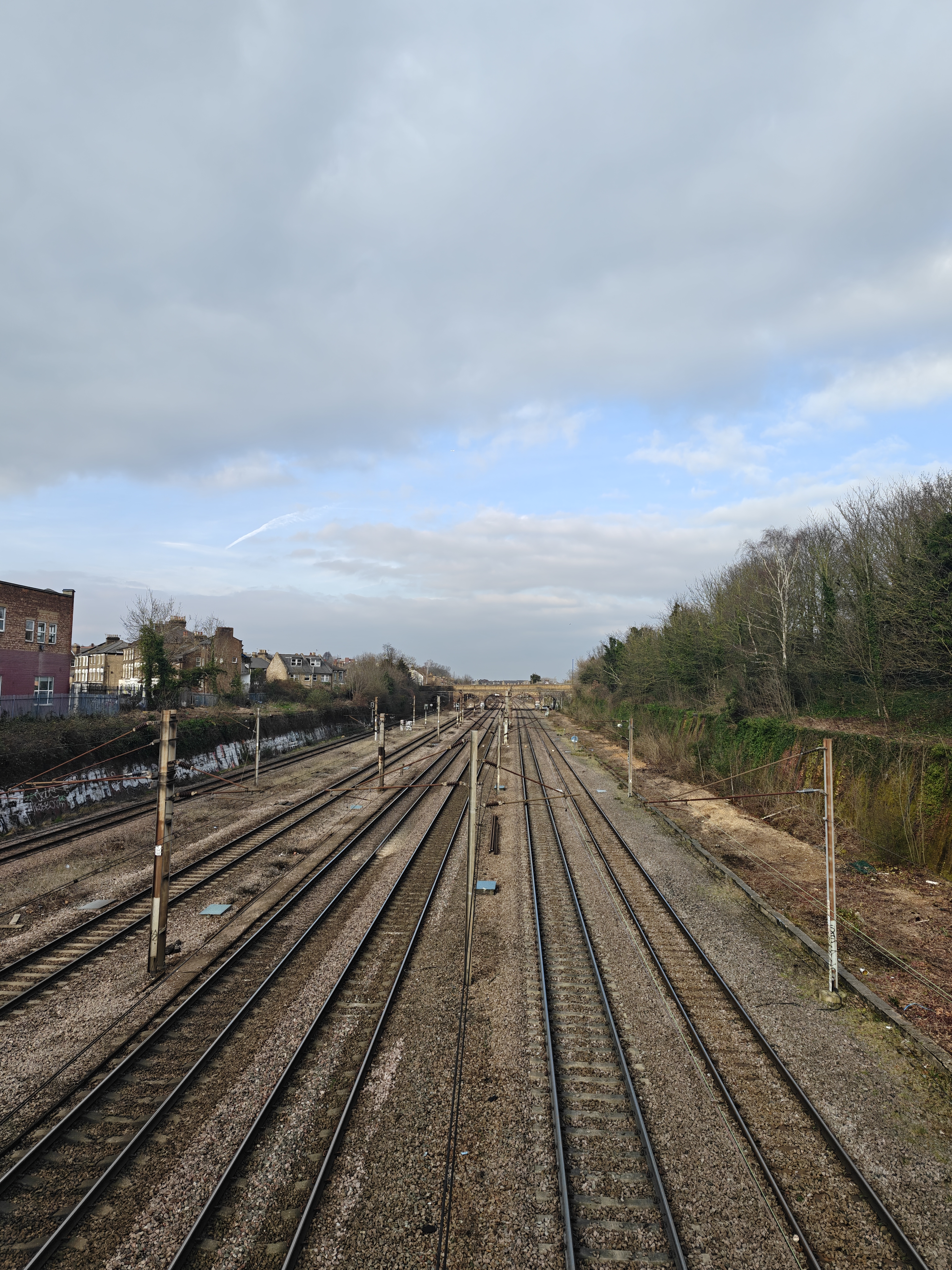
Above: A comparison of the different focal lengths on the Find N5

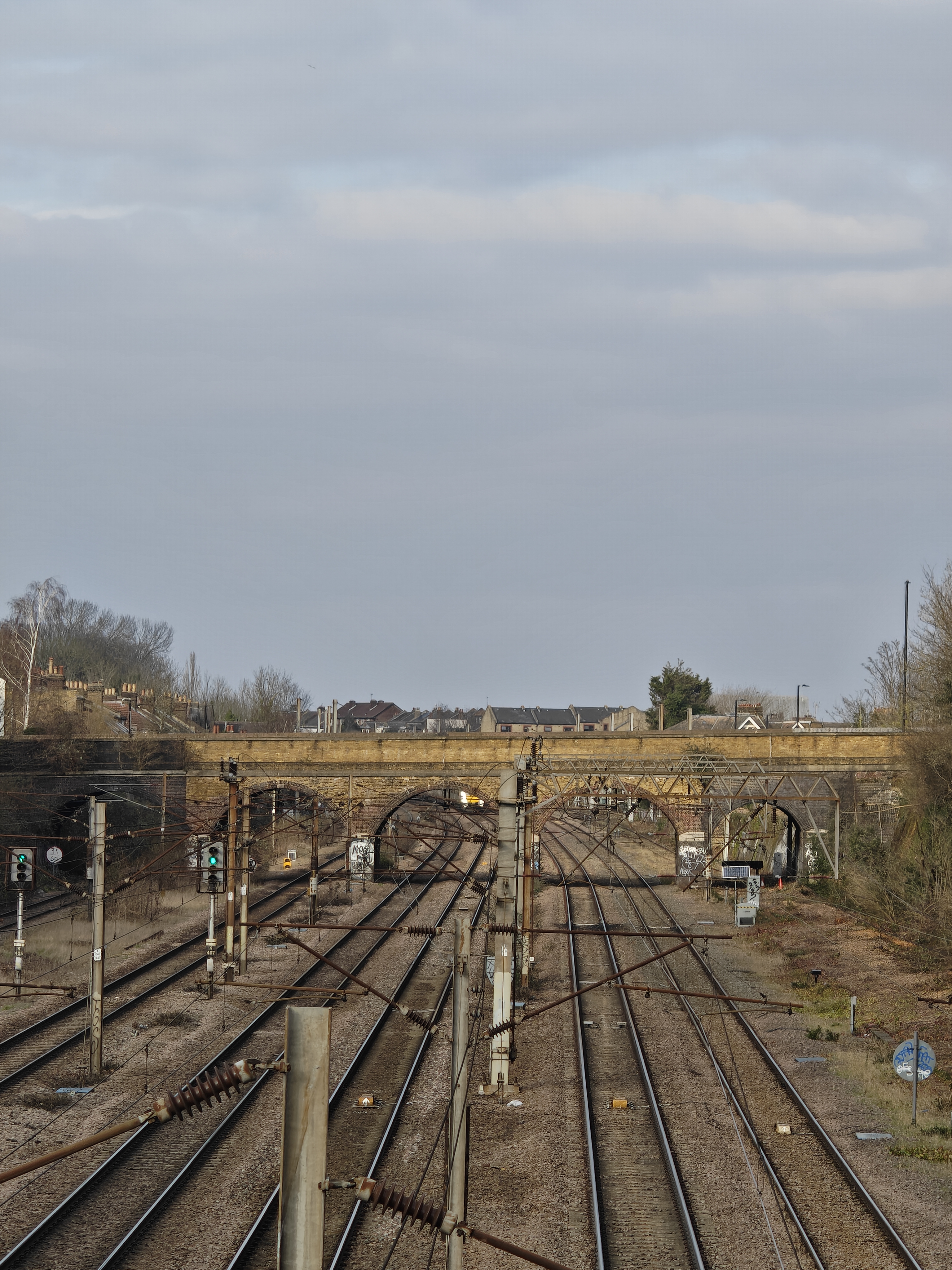
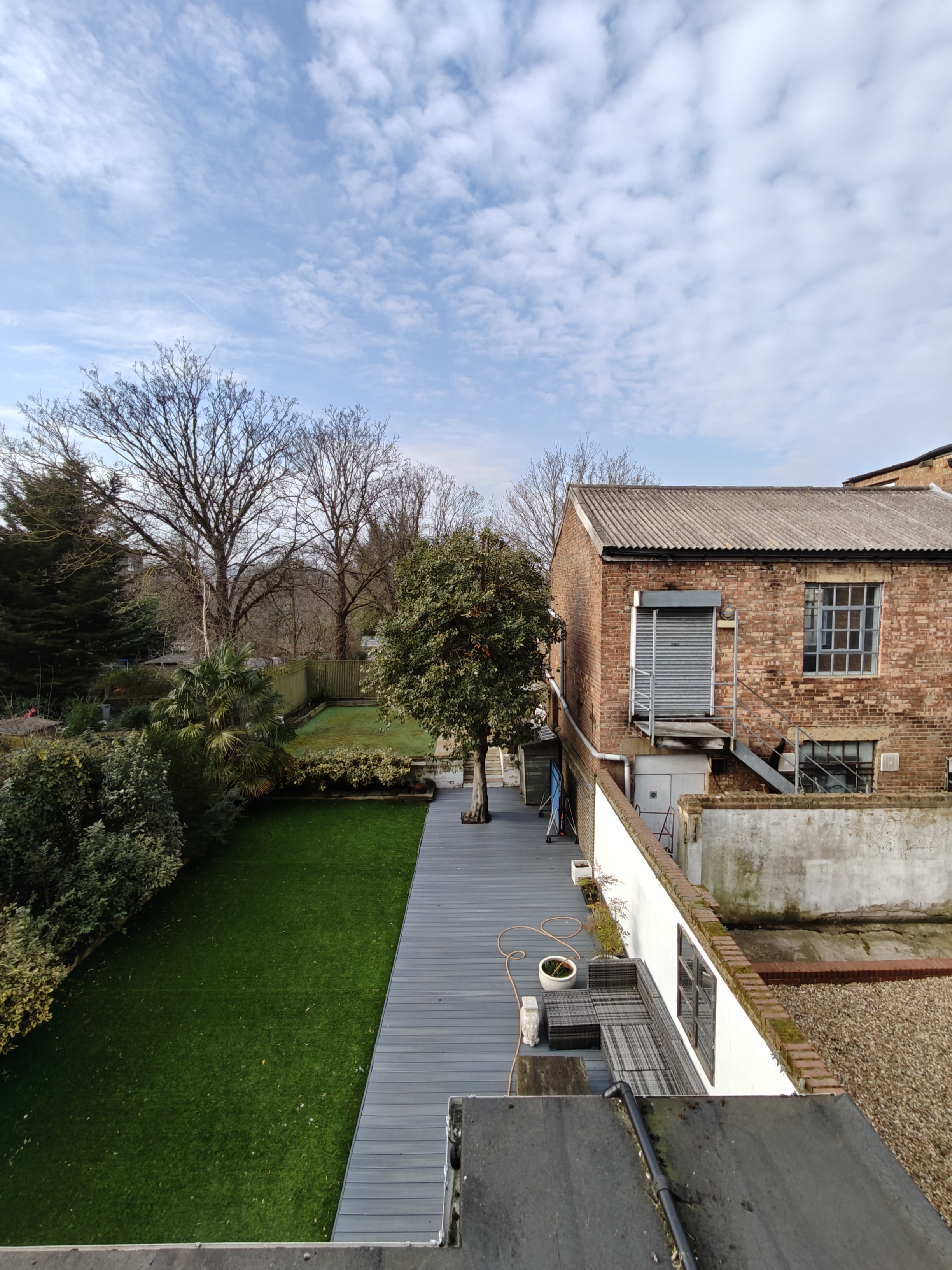
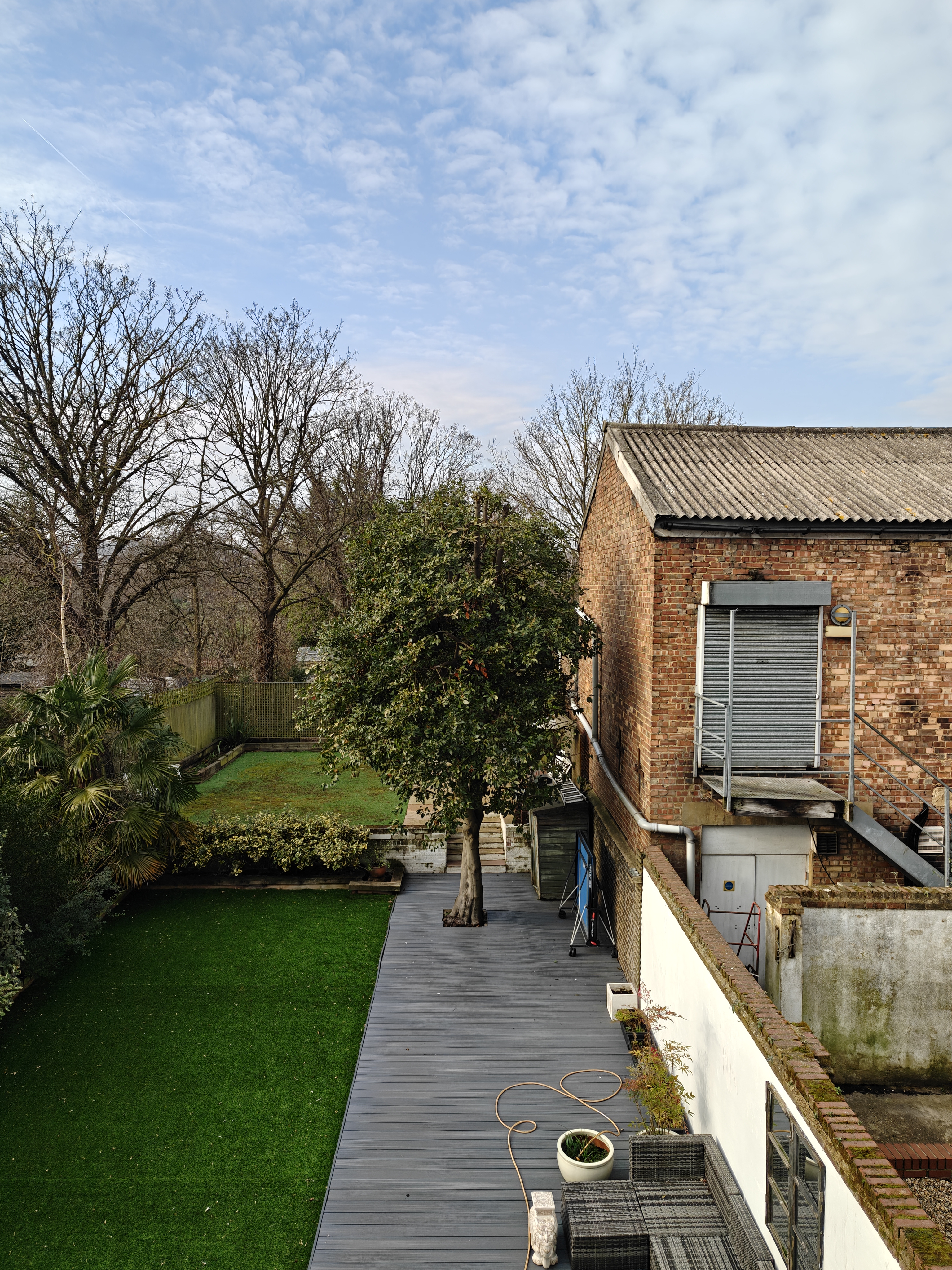
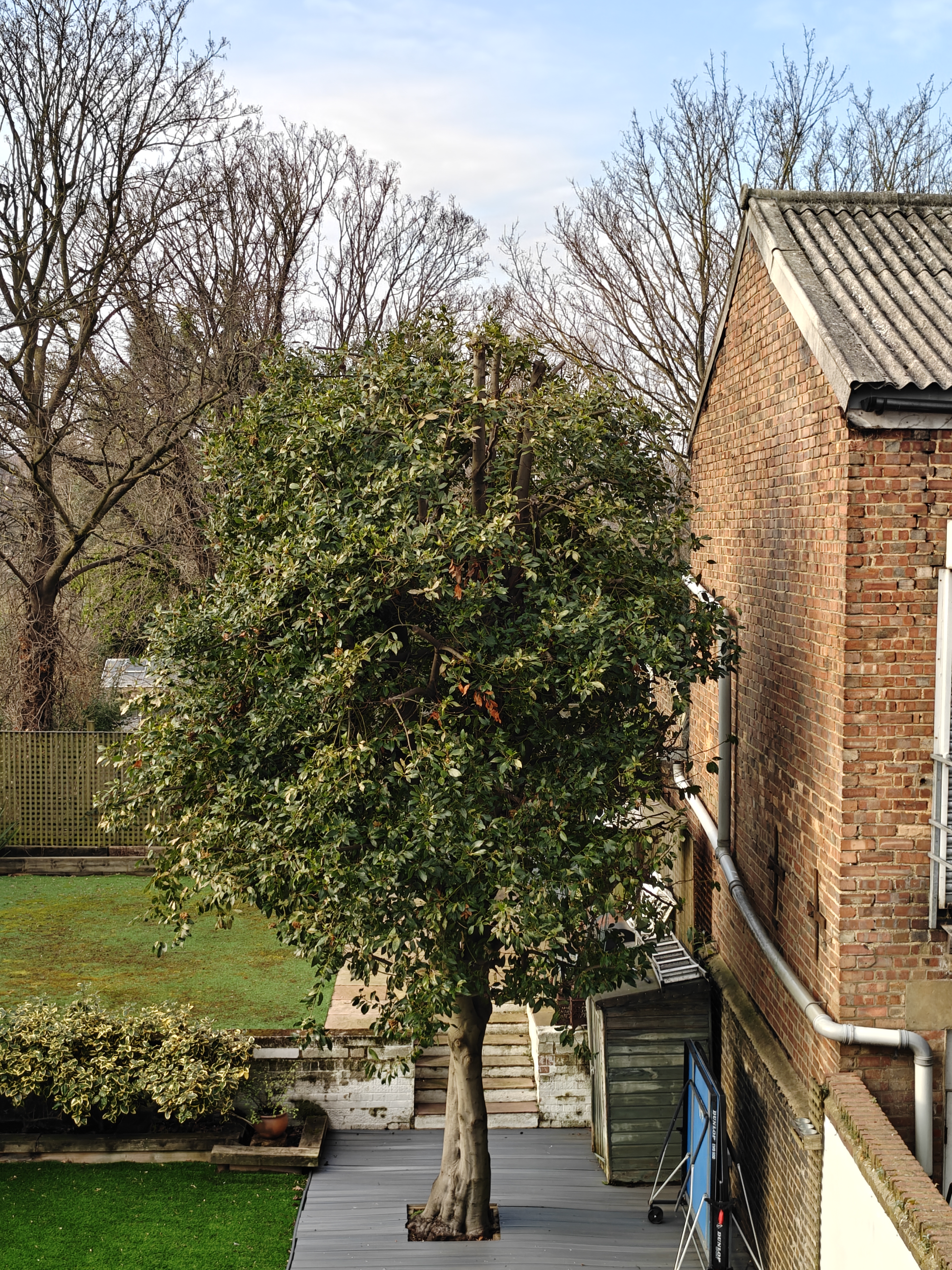


Again, photos from the telephoto camera are clear with pleasing detail, the camera has a 3x optical zoom, but the sensor can crop into 6x without much compromise on quality. The telephoto camera can also take advantage of Oppo's AI-assisted zoom, which uses AI to sharpen up details in images up to a massive 120x zoom. The AI zoom is impressive up to around 30x, but beyond that, there is an evident muddiness to details, and objects and lines look overly blocky – it certainly has a lot of potential, but right now it isn't something I would willingly use except as a necessity.
The telephoto camera has also taken on the role of macro camera. This just makes far more sense than using the ultra-wide camera like many brands still do, and anyone familiar with SLR-style cameras knows that most pro macro lenses are around 100mm. A telemacro camera not only enables you to get a much more pleasing perspective on your subject without the distortion of a wide lens, but it also allows more light to reach your subject without the phone blocking it out and doesn't scare away small critters you might want to photograph.
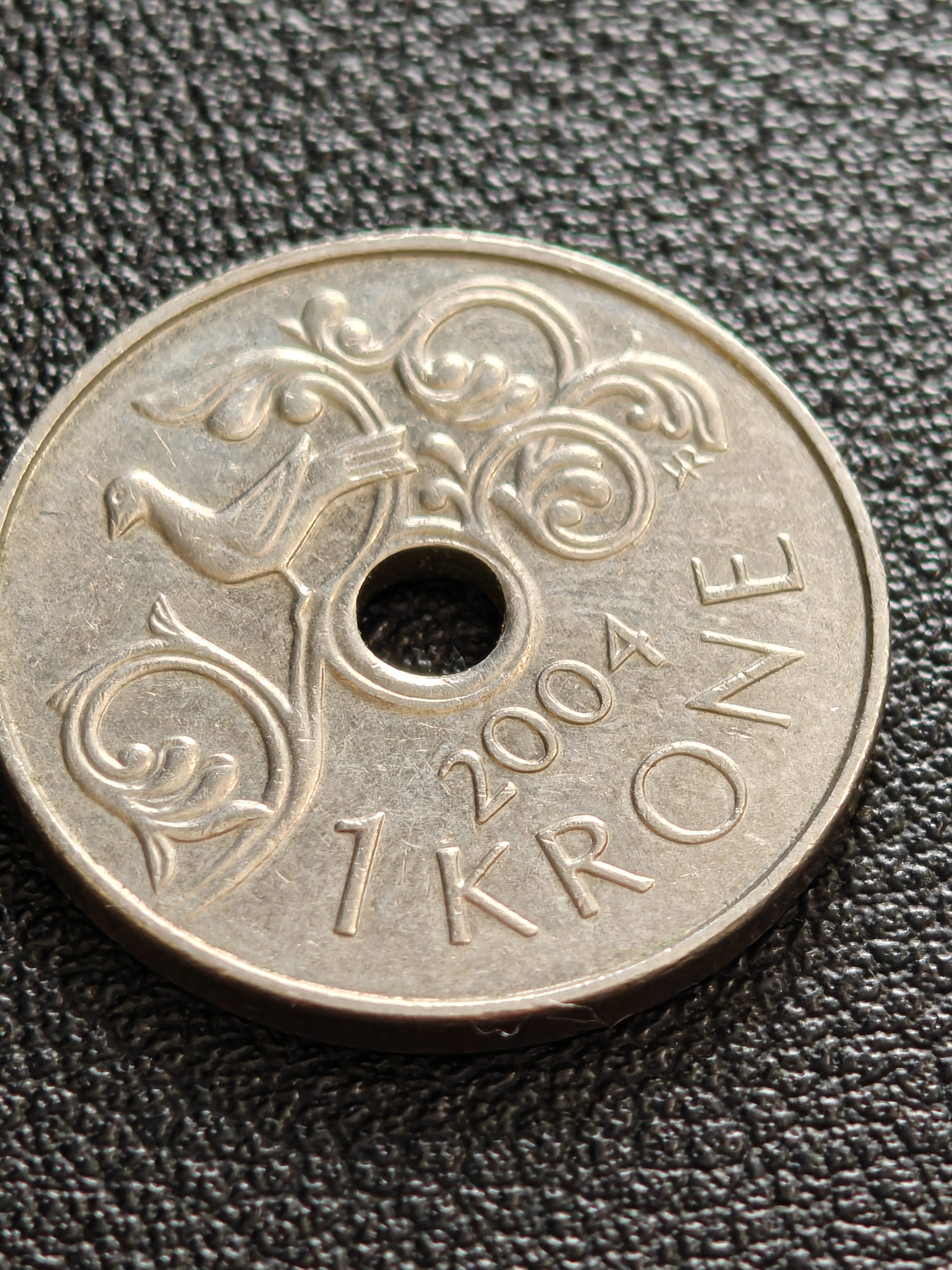
Above: Telemacro performance on the Find N5
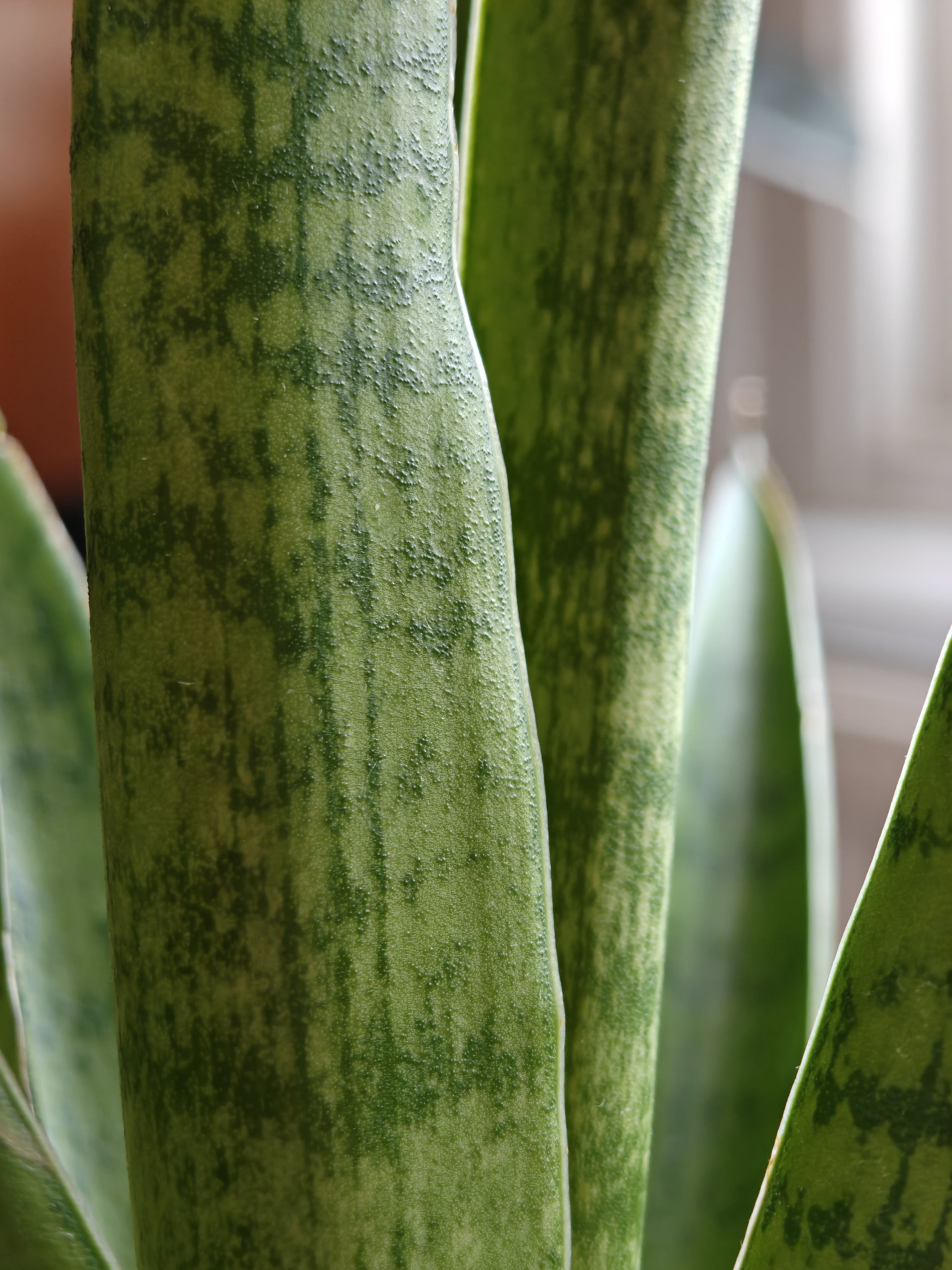

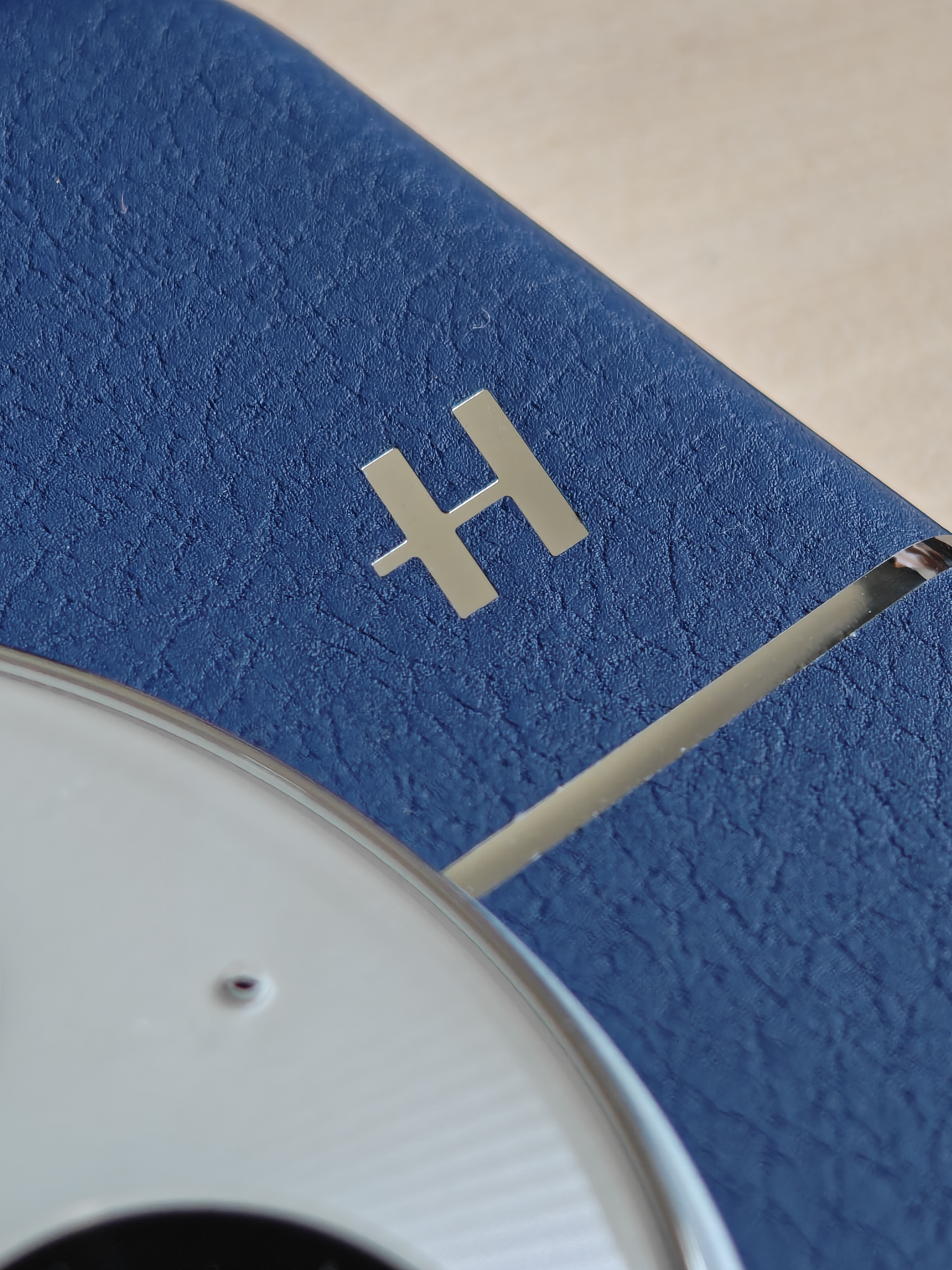
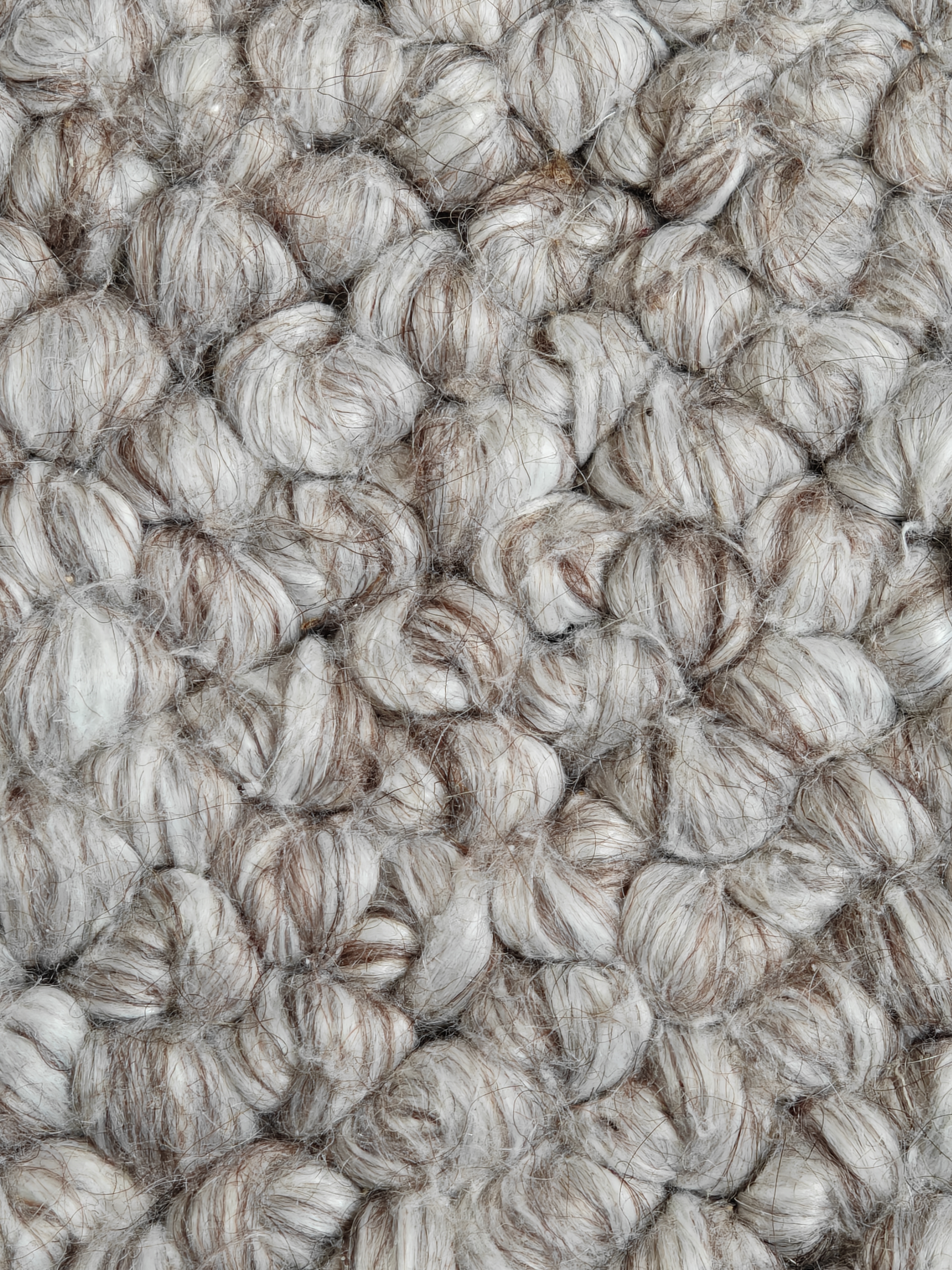
The telemacro abilities of the N5 are good – details are very crisp, and the depth of field is quite professional looking, almost looking just like a real macro lens. One issue I noticed though is sometimes the phone can choose a too-narrow depth of field, and starts the blur a little too soon which can be frustrating if you don't immediately review your shots and only find out later. It can't compete with the macro monster that is the Vivo X200 Pro, but I'd definitely reach for the N5 for macro photography over the Pixel 9 Pro or iPhone 16 Pro.
I am going to finish with the ultra-wide camera. This took the hardest hit to squeeze zoom into the N5's slim profile, and is the biggest disappointment from the set. While photos in good light are acceptable, they are visibly lower in quality than the main or telephoto camera, and in low light, the small sensor just can't really cope with details quickly disappearing under some heavy-handed noise reduction.
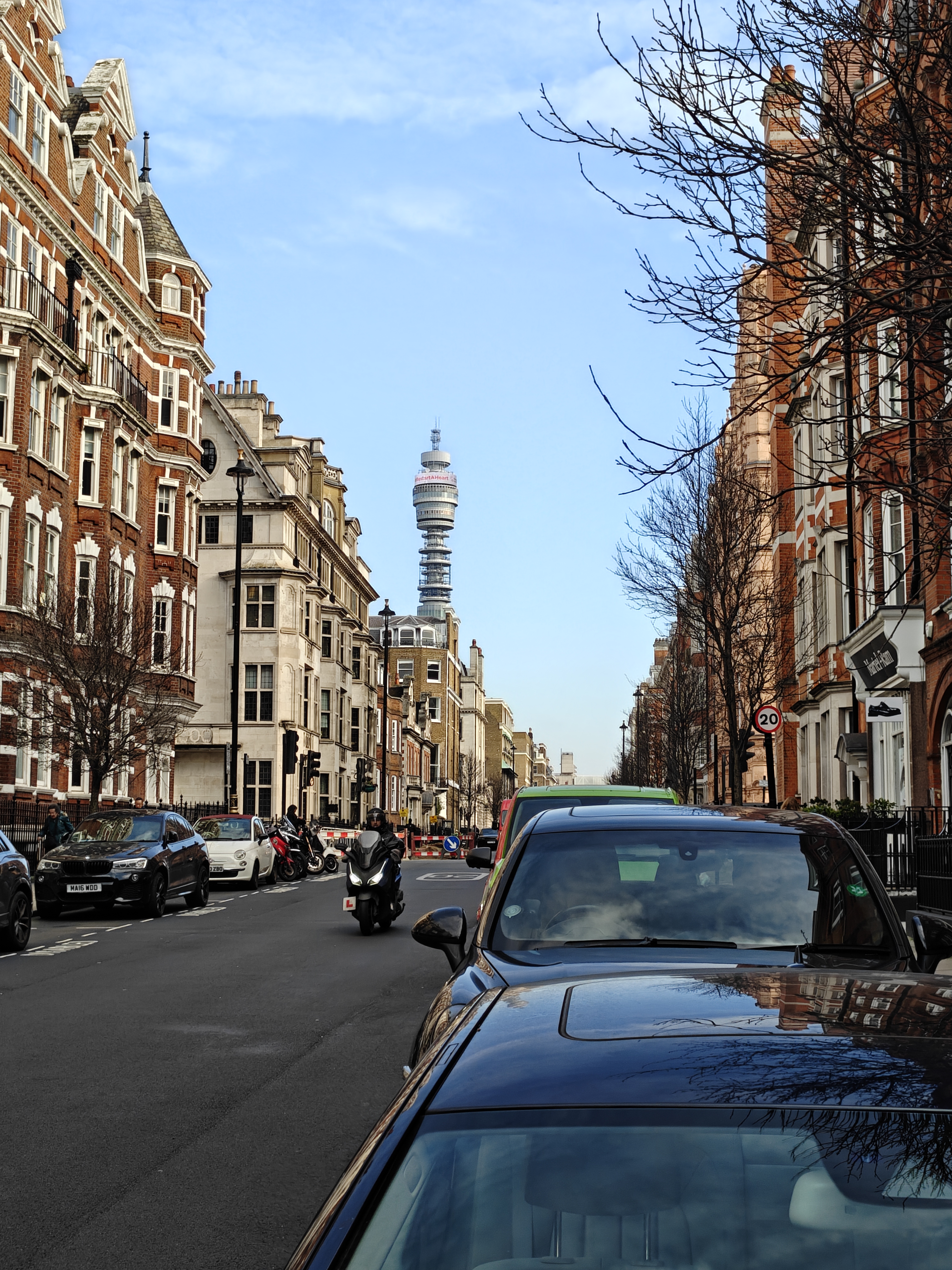
Above: Oppo's AI-assisted zoom in action on the Find N5
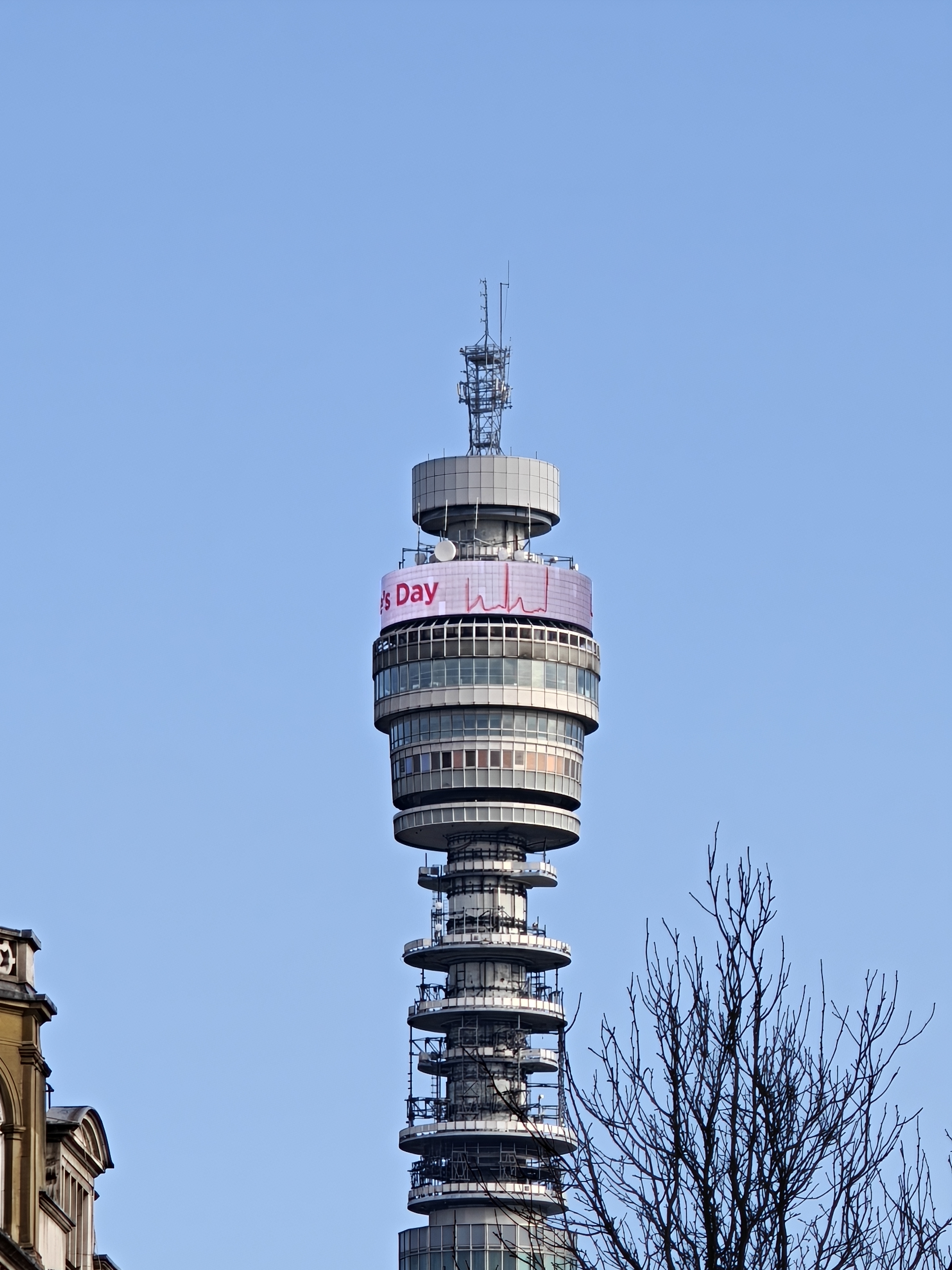
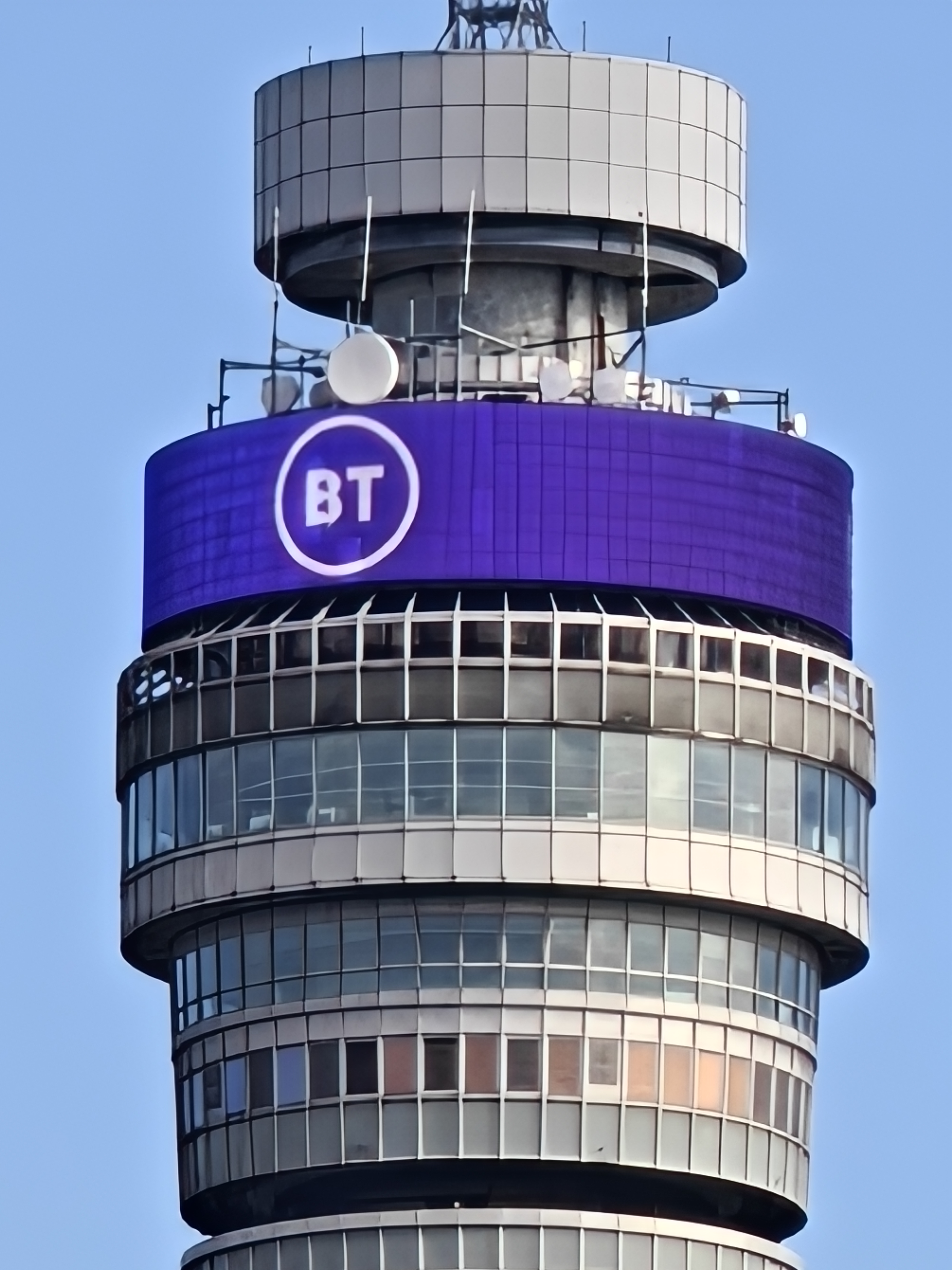
Oppo Find N5: Phone Performance
The Find N5 is the world’s first foldable to come with Qualcomm’s latest Snapdragon 8 Elite processor which is paired with Oppo’s own Trinity Engine – and from Oppo benchmarking, the N5 should deliver 40-45% better CPU, GPU, and AI performance than the previous generation.
While I can’t attest to those exact figures, in my testing the Find N5 powered through everything I threw at it. Day to day, animations are silky smooth, apps open in an instant and I haven’t seen any lag. Photo and video editing was speedy to perform on-device actions, in Lightroom moves like adding gradient filters were as quick as on my MacBook, although with more and more features being handled in the cloud, things like subject or sky detection are more dependent on your internet connection.
Editing & AI
The Find N5 has Oppo’s latest AI-assisted editing features, with an AI-powered eraser, reflection removal, unblur, and increased clarity built into the Oppo Photos app. The slight snag though is these are all cloud-based tools, so they require you to have a decent internet connection to use, and then there are also the added privacy concerns of sending your images to unknown servers.
But how do they perform? On the whole, they are a useful toolkit, but some clearly function better than others. My top performers are, firstly, the AI Eraser, which does a fantastic job of highlighting subjects and filling in the background and rivals the best from Google’s Magic Eraser. I also found the AI Clarity Enhancement especially useful for close-up and macro shots where you really want to exaggerate detail and sharpness. However, I do find it less effective for its more intended purpose of cropping into a section of a larger photo and bringing back some of the lost details where results were just so-so.
The take-them-or-leave-them performers are the AI Unblur, which isn’t bad, but the amount of blur this can correct is limited, and the results didn’t exactly make me gasp with amazement. The AI reflection remover is one that I am more excited about its potential than how it is right now. On the right photo, it can do a pretty good job, but it also had a habit of filling in some of the removed reflections with dark blurs which looked worse than the original.
Battery
The 5600mAh battery that Oppo somehow has managed to squeeze into the Find N5 isn’t just showboating, foldable phones are power-hungry and battery longevity is often one of the big criticisms of the form factor. I am pleased to report though that the N5 battery performance is excellent. Using a combination of both the cover and inner screens, taking a lot of photos, watching TikTok and YouTube, and just my daily admin of email, Slack and WhatsApp, I am easily getting through a full day.
The N5 also has speedy SuperVooc charging, which using the charger in the box can get you up to 80W charging, although if you get a charger in the box is region dependent, with anyone in the EU likely missing out. My experience with third-party chargers was quite varied. I have 100W+ Anker and Ugreen chargers that display the output of each port, but I got around a consistent 40-50W, which charged the phone in around an hour and thirty minutes.
There is also 50W wireless charging using Oppo's (Or OnePlus') charging puck, although this also required a magnetic case for the N5 – which I don't have – but this solution seems like an unnecessary expense and faff when you could just plug the phone into a USB.
Oppo Find N5: Verdict
I'm seriously impressed by the Oppo Find N5 – and it’s a game-changer for foldable phones. I am blown away by how remarkably thin and light it is, leaving phones like the Galaxy Z Fold 6 and Google Pixel phones looking outdated with their thick bodies. The size makes it pretty much indistinguishable from a regular smartphone when folded, this takes up no more room in my pocket than my usual bar-style phone, but then has that big 8in screen if and when I need it – I am tempted for the first time to actually swap my daily driver to a foldable.
Handling is a joy, with silky smooth animations and a feel that makes multitasking on the split-screen inner display a breeze. The new Titanium Flexion Hinge, combined with Nanocrystal Glass on both screens, means that durability isn’t sacrificed for style, and I barely noticed any crease, and when I did, it was hardly a distraction unless I was under extreme lighting conditions.
That said, I can’t ignore the one minor letdown – the camera system. Despite the Hasselblad co-development, the camera hardware just doesn't share the same exciting revolution as the rest of the Find N5. The sensors on paper have had a downgrade, especially the ultra-wide unit. Don't get me wrong, images are very good, with good color and detail from the wide and tele cameras – and they are as good as other foldables, but then, that isn't a particularly high bar. Overall, they just left me a little bit disappointed when I was expecting a leap forward in foldable phone photography.
In short, while I’m excited enough by its design, performance, and everyday functionality to seriously consider replacing my traditional phone with the Find N5. It’s an outstanding device for those prioritizing sleek design and performance, just be ready to live with some camera compromises.
Design | Thin, light, with a minimal crease – this is the pinnacle of folding phones. | ★★★★★ |
Performance | Solid performance, beautiful screens, and a great battery life, but the cameras aren't as revolutionary as the rest of the device. | ★★★★☆ |
Value | Undercuts Samsung and Google rivals while meeting them on performance – still an expensive device though | ★★★★☆ |
Alternatives
Samsung Galaxy Z Fold 6
The world's biggest phone manufacturer unsurprisingly dominates the conversation around foldables, and the latest Fold 6 improves on Samsung's previous efforts, but now looks pretty chunky next to the Oppo Find N5. Read the full review...
OnePlus Open
This device might be two years old, but we were so impressed with its cameras over other foldables that it is still our top-ranked foldable camera phone. Read the full review...

Gareth is a photographer based in London, working as a freelance photographer and videographer for the past several years, having the privilege to shoot for some household names. With work focusing on fashion, portrait and lifestyle content creation, he has developed a range of skills covering everything from editorial shoots to social media videos. Outside of work, he has a personal passion for travel and nature photography, with a devotion to sustainability and environmental causes.
You must confirm your public display name before commenting
Please logout and then login again, you will then be prompted to enter your display name.
